Unsolved Mystery: The Beast of Gévaudan
Fear gripped the French countryside in the summer of 1764 as the infamous Beast of Gévaudan terrorized its victims in a series of hideous and fatal attacks.
Could the ravening creature simply be a wolf? With numerous victims being found horribly mutilated, speculation about the identity of this beast was rife in 18th century rural Gévaudan. The mystery of the Beast remains unsolved to this day.
Unleashing the Beast of Gévaudan
The mysterious region of Gévaudan in France was renowned for its enchanting forests and untamed forces of nature. As Jay M. Smith wrote in his book, Monsters of the Gévaudan: The Making of a Beast, “Gévaudan had the reputation for being a remote, isolated backwater where the forces of nature had not been…[fully] tamed, where the forests were indeed enchanted.

Source: ND/Roger Viollet via Getty Images
It’s fascinating, it’s powerful, it’s scary, it’s sublime.” This region, which is today Lozère, was the perfect setting for this terrorizing, ferocious and savage beast.
The Horror of Gévaudan: 210 Attacks, 113 Dead
For three years, Gévaudan was plagued by a terror that left an indelible mark on its people. Reports of 210 attacks, resulting in 113 deaths and 49 injuries, spread across an area of 2,800 square miles, paint a harrowing picture of the reality on the ground.
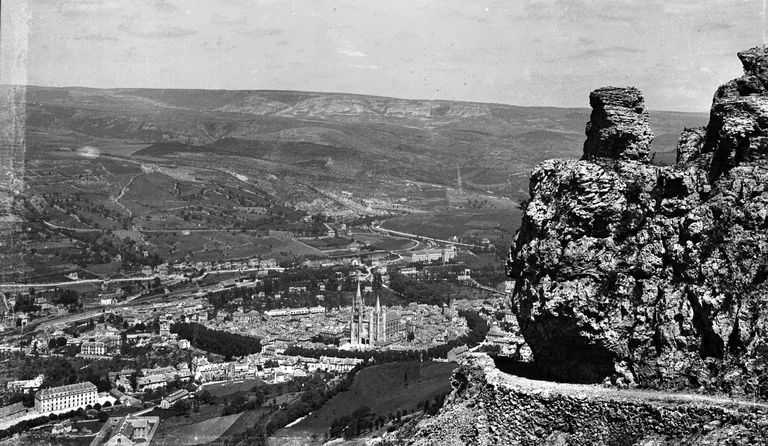
Source: LL/Roger Viollet via Getty Images
This tragedy was felt by all, and its toll on the people of Gévaudan was immense. It’s a reminder of the fragility of life and the cruel, unexpected events that can occur at any time.
Miraculous Escape from a Monstrous Creature: The Story of a Shepherdess
In June 1764, Jeanne Boulet, a fourteen-year-old shepherdess, tragically became the first recorded victim of the mysterious creature. She was tending her flock when the beast attacked, cruelly cutting short her young life. However, two months prior to this, another young woman encountered the same creature while tending her cattle.
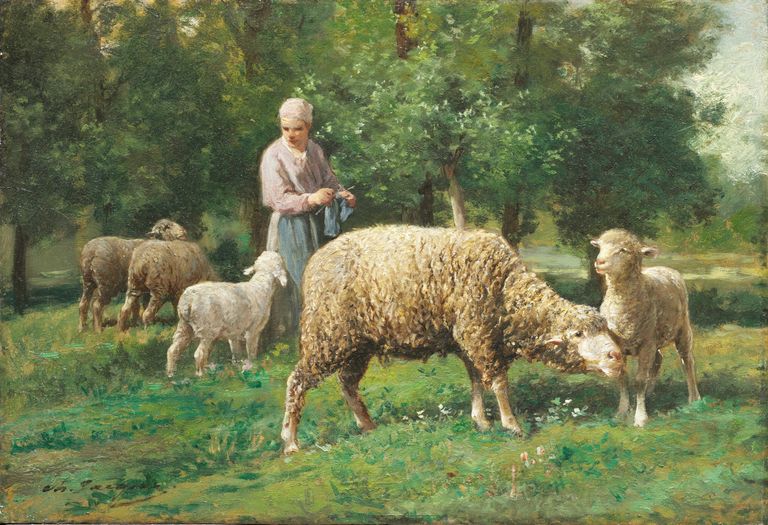
Source: Sepia Times/Universal Images Group via Getty Images
Fortunately, her herd of animals defended her, and she miraculously escaped with her life. This incredible story of survival is a testament to the courage and strength of the shepherdess and her herd.
Horrifying Beast Terrorizes French Village
The horror in the small French village of Gévaudan was far from over as yet another tragedy unfolded just a month after the death of Boulet. This time it was a 15-year-old girl who was killed by the mysterious creature, described as a “horrible beast” in her dying words.
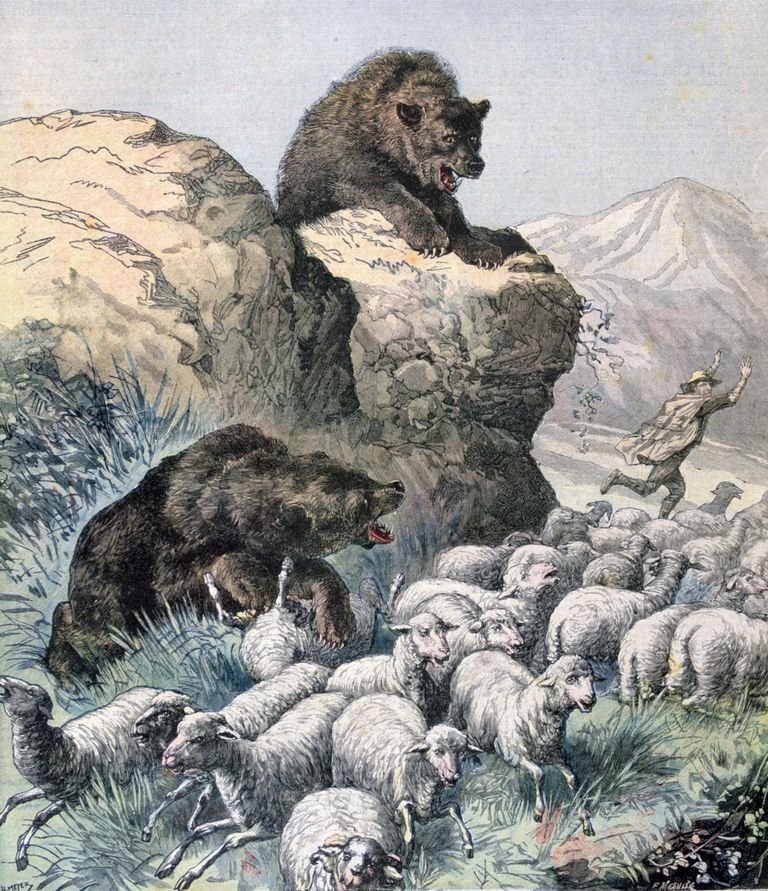
Source: Ann Ronan Picture Library/Photo12/Universal Images Group via Getty Images
Though animal attacks were not uncommon, the sheer number of incidents occurring was unprecedented. People of Gévaudan were living in terror, hoping desperately for the end of this monster’s reign of terror.
Hunting the Beast of Gévaudan - A Handsome Reward on Offer!
Striking fear into the hearts of the people of Gévaudan, a ‘monster’ was on the loose. The authorities produced a lurid poster describing the creature as, “the size of a young bull”, with a penchant for attacking women and children, drinking their blood, cutting their heads off and carrying them away!
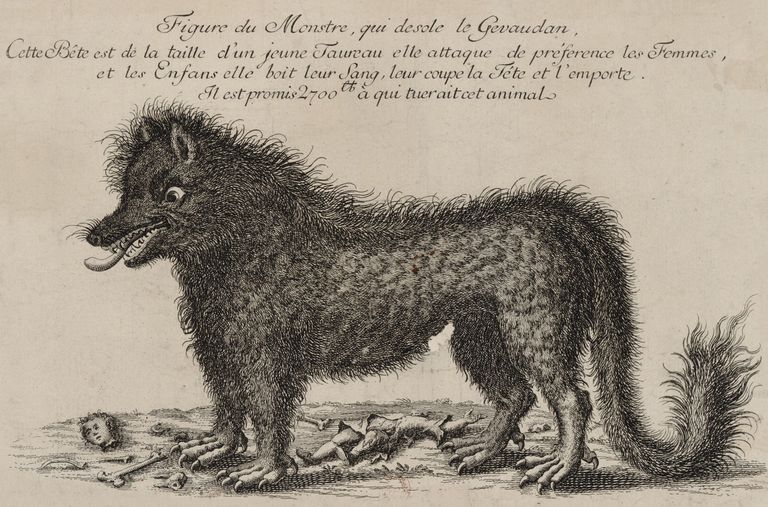
Source: Gallica Digital Library/Wikimedia
An accompanying generous reward was offered to anyone who could slay the creature – whatever it may be – and it was henceforth known as the Beast of Gévaudan.
Unraveling the Mystery of the "Wolf-Donkey"
Have you ever heard of a creature resembling a wolf, yet as big as a donkey? Described as reddish-brown, with a dark, ridged stripe down its back, this mysterious creature was reported to have a long, gaping jaw, six claws, pointy upright ears and a supple, furry tail.
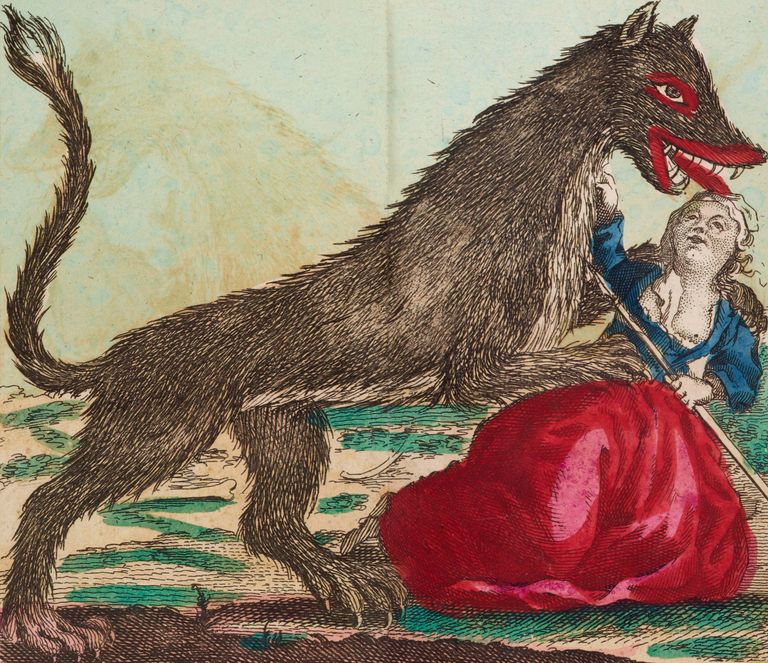
Source: Gallica Digital Library/Wikimedia
Its cry is said to be more like a horse’s neighing than a wolf’s howling, and it is said to be able to knock people down! Could this be real? Uncover the truth and unravel the mystery of the “Wolf-Donkey”!
King Louis XV Intervenes in the Horrific Attacks of the Beast of Gévaudan
In the town of Gévaudan, the massacre of the peasantry had to be stopped. With the death toll rising, the local nobility and government officials took action. The situation became so severe that it caught the attention of King Louis XV of France, who offered a large reward, equal to a year’s salary of a regular man, to anyone who killed the beast.

Source: DeAgostini/Getty Images
Would the King’s intervention finally bring an end to the gruesome attacks of the Beast of Gévaudan?
Unstoppable Beast Foiled Local Huntsmen
The locals of the Chateau de la Baume didn’t stand idle when they encountered the fierce beast in October 1764. When the creature appeared and sized up a peasant and his flock, a party of huntsmen sprang into action.
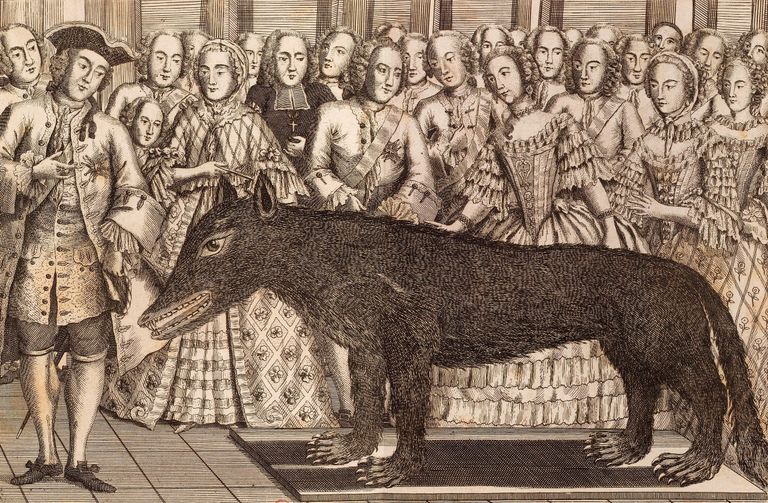
Source: Gallica Digital Library/Wikimedia
They pursued the animal and managed to fire several shots at it. The creature fell, but to their surprise, it quickly jumped up again and bounded away. Despite their best efforts the creature seemed to be unstoppable.
Ten-Year-Old's Heroic Act Saves Playmates from Beast
Jacques Portefaix was only ten years old when he exhibited this remarkable display of bravery. In January 1765, he was with a group of friends when the beast suddenly appeared and attacked. To protect his playmates, Portefaix rallied them together and, armed with only sticks, they managed to chase the animal away.
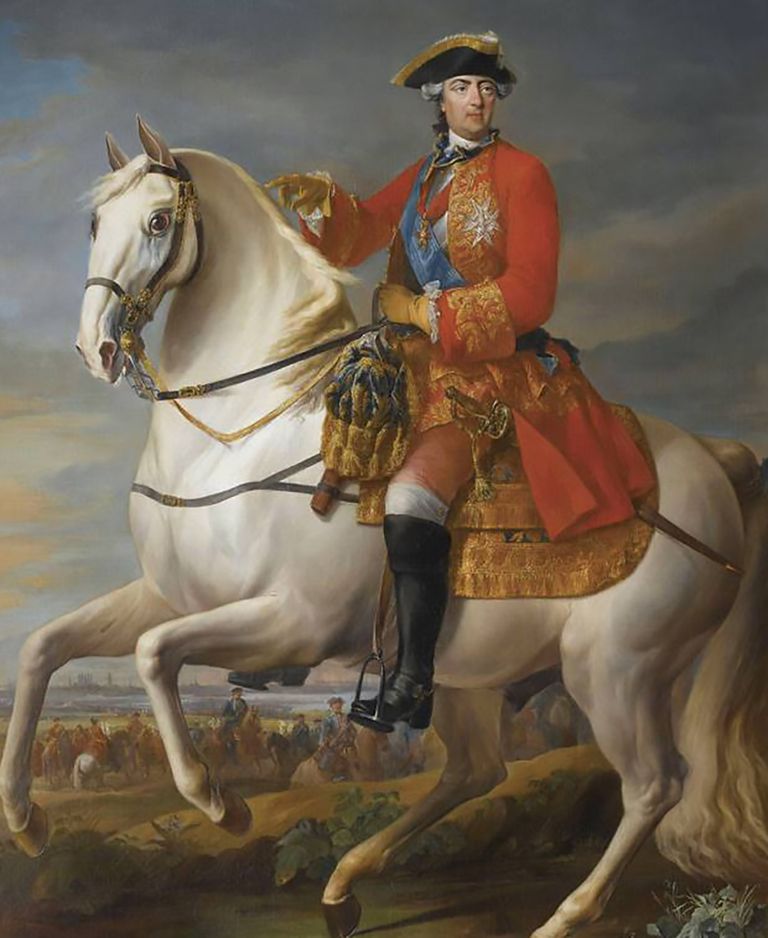
Source: art.rmngp.fr
Impressed by his courage, King Louis XV rewarded Portefaix by paying for his education, a luxury that was rarely afforded to French peasants at the time.
The Maid of Gévaudan: How One Young Woman's Courage Defied the Beast
In the summer of 1765, Marie-Jeanne Valet, a 20-year-old woman, made history with her extraordinary courage. While crossing a river with her sister, Valet was attacked by the beast. But the young woman was prepared, having armed herself with a bayonet attached to a staff.
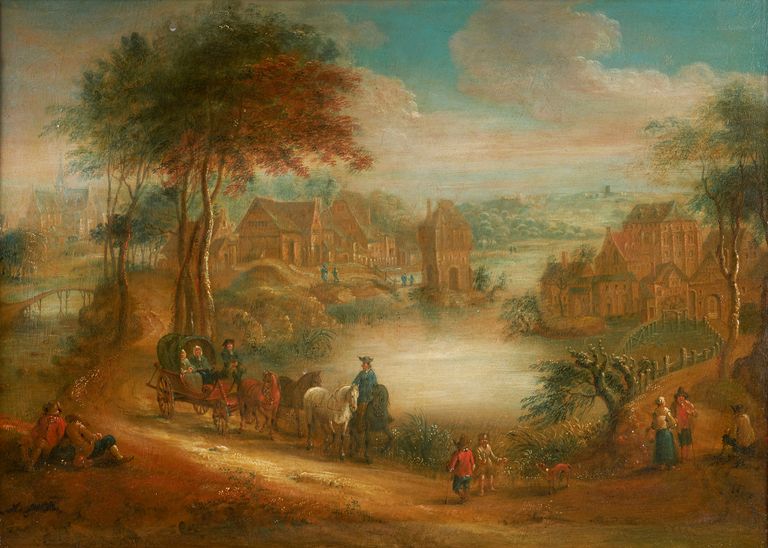
Source: Heritage Art/Heritage Images via Getty Images
Valet bravely thrust her weapon into the creature’s breast, and the animal fled. For her brave actions, Valet was hailed as the “Maid of Gévaudan.” Her story stands as an inspiring testament to the heroic power of one person’s courage.
Wild Beast Terrorizing French Villages
The horrifying tale of a wild beast terrorizing French villagers had quickly spread to the entire nation, thanks to the increasing impact of newspapers. In a time when political reporting was heavily censored by the authorities, this sensationalist story of a voracious creature was nationwide news.

Source: adoc-photos/Corbis via Getty Images
Though the incidents were localized, the press was abuzz with gory details of the beast’s rampages. This created an atmosphere of fear and frenzy among the French population.
Unhealthy Appetite for Grisly Reportage
The story of the Beast of Gévaudan was one of the first media sensations of its time, with newspapers from Boston to Brussels covering it in disturbing detail. People in the 18th century had a morbid curiosity for gruesome reportage, with a seemingly unhealthy appetite for the macabre.

Source: Art Images via Getty Images
It was a story that captured the public’s attention and was talked about in hushed tones, as people speculated about the horrors that the Beast of Gévaudan was inflicting on the people of France.
Unstoppable Beast Terrorizes Humanity
Described as a ferocious creature, of unknown origin, the beast has been wreaking havoc and leaving a trail of destruction in its wake. According to press reports at the time, hunters of the beast were entirely unsuccessful in their efforts, as the beast was far more cunning than they were.
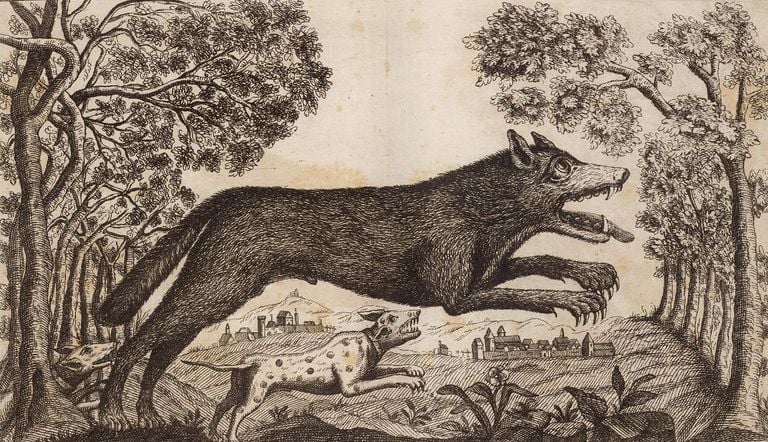
Source: Gallica
It was said to be killing individuals, drinking their blood, and feasting on their flesh, making it virtually unstoppable.
Louis Takes Action Against the Fearsome Beast of Gévaudan
Louis was determined to do something about the terror wrought upon his land by the ferocious beast of Gévaudan. Despite individual acts of bravery, the death toll kept rising and it was evident that a more organized approach was needed.

Source: Fine Art Images/Heritage Images via Getty Images
Louis felt a moral obligation to act and protect his people from the relentless attacks of this animal. He was unwilling to stand by as his beloved subjects were ruthlessly killed. Louis took a stand and began his mission to defeat the creature and bring peace back to Gévaudan.
A King's Plan to Destroy the Beast
The King had a plan to end this menace. He had already offered a reward for its killing, but went further by dispatching one of his most trusted men to hunt it down. The mid-18th century was a tumultuous time in France and the King was determined to take action.
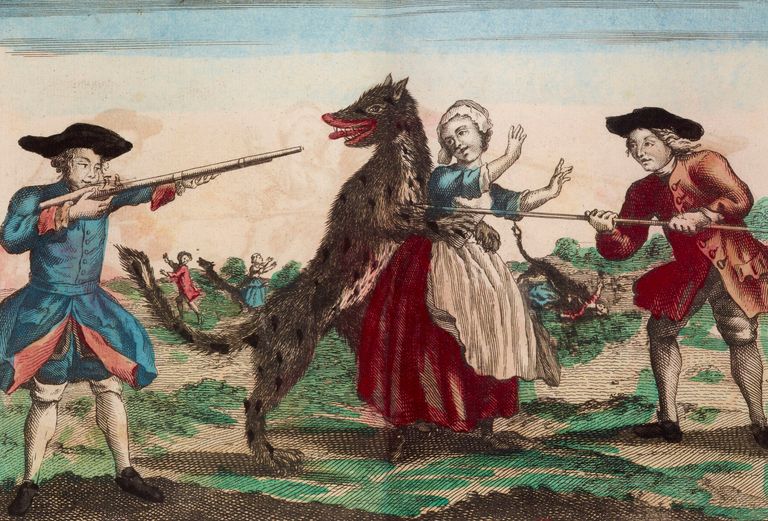
Source: Gallica Digital Library/Wikimedia
He wanted to restore peace and order to his kingdom and was willing to do whatever it took to achieve that goal. With his brave soldier tasked with the mission, the King was sure that the beast would soon be vanquished.
Uniting to Track Down a Beast: The King's Distraction Plan for France
In 1764, France was in a state of turmoil due to the disastrous consequences of the Seven Years’ War with Britain and Prussia. Seeking to distract his people from this, King Louis XV came up with the idea of rallying them together to track down the Beast of Gévaudan.

Source: Lorraine Boissoneault/Twitter
In the midst of a difficult period, the King found a way to bring his people together in a united effort.
Louis XVI's Response to Conflict with Prussia and Britain
Among the consequences of the war with Prussia and Britain, France had suffered a great loss of its overseas territories, including Canada. The economic ramifications of this conflict had left the country in a weakened state.
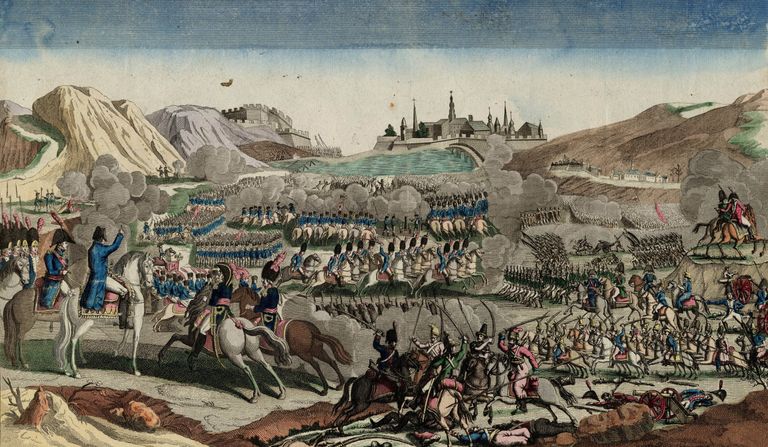
Source: Fine Art Images/Heritage Images/Getty Images
Perhaps also with an eye on the potential political implications this had, Louis XVI sought to take decisive action. His efforts aimed to restore some stability to the nation, including politically. In doing so, he hoped to demonstrate his commitment to the well-being of the French people.
The Great Beast Hunt of 1809
In 1809, King Louis XVIII of France declared the hunt was on for the mysterious and dangerous beast terrorizing the countryside. He appointed Captain Jean Baptiste Duhamel, an officer with Clermont Prince Dragoons and a local militia leader, and Étienne Lafont, a local politician, to lead the mission.
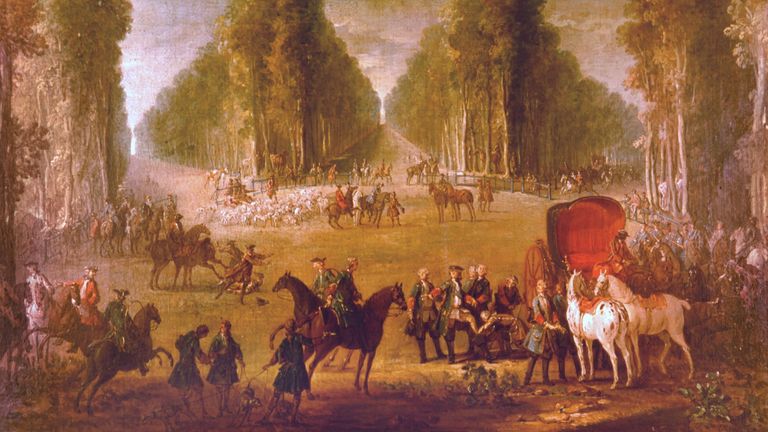
Source: Photo 12/Universal Images Group via Getty Images
Duhamel organized the hunt along military lines, and an astonishing 30,000 volunteers answered his call to join the campaign. It was a monumental effort that would go down in history.
A Cunning Plan to Catch the Beast
In his desperate attempt to capture the beast, Commander Duhamel employed some cunning tactics. He laid poisoned bait to tempt the creature out of hiding and even ordered his hunters to dress in female attire, as the beast seemed to target women.
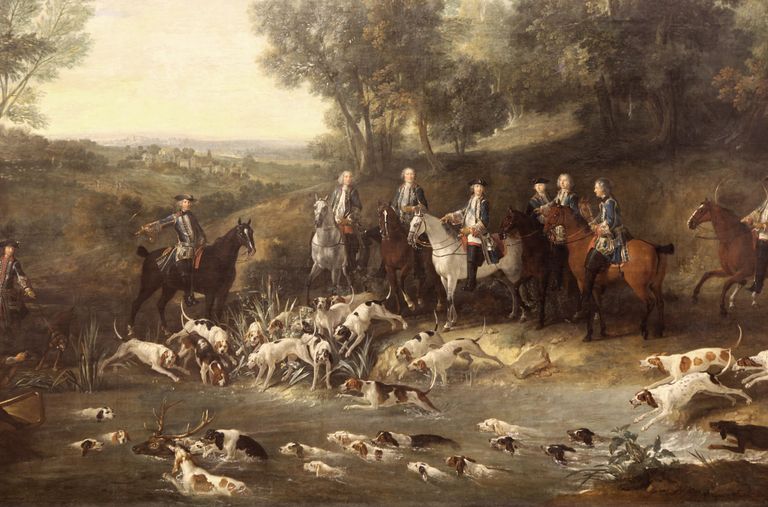
Source: adoc-photos/Corbis via Getty Images
It remains unknown what his men thought of this ploy; however, one can only assume it was not met with universal enthusiasm. Nevertheless, Duhamel was willing to do whatever was required to finally kill the beast.
The D'Ennevals Take on the Beast of Gévaudan!
After seven months of trying and failing, Duhamel abandoned his mission of capturing the elusive Beast of Gévaudan. Upon hearing the news, professional hunters from Normandy – father and son duo, the D’Ennevals – were eager to take up the challenge.
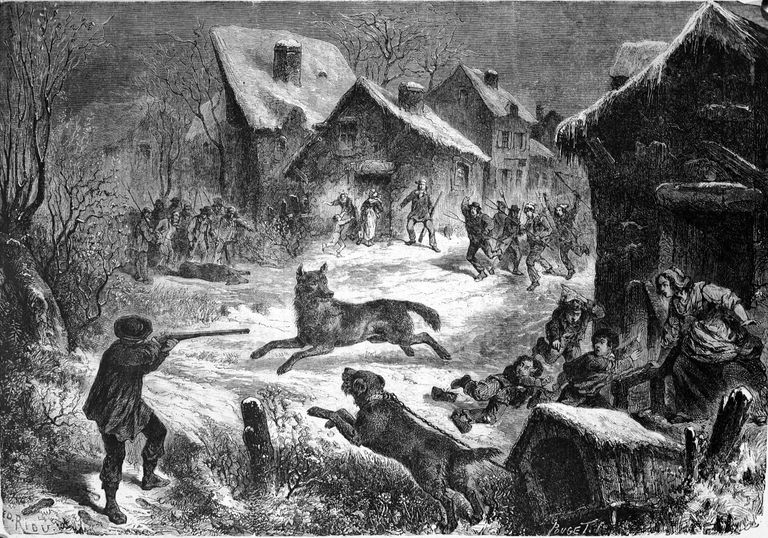
Source: Harlingue/Roger Viollet via Getty Images
With an impressive record of 1,200 wolves killed by the senior D’Enneval, it seemed like they had the best chance of success. Could the D’Ennevals finally be the ones to put an end to the Beast of Gévaudan’s reign of terror?
Unveiling the Mystery of a Strange, Hairy Beast: The d'Ennevals' Wolf Hunt
Though the d’Ennevals were renowned wolf hunters, what was this mysterious creature they were hunting? With a snout resembling that of a calf, and long hair, was it a wolf, a hyena?
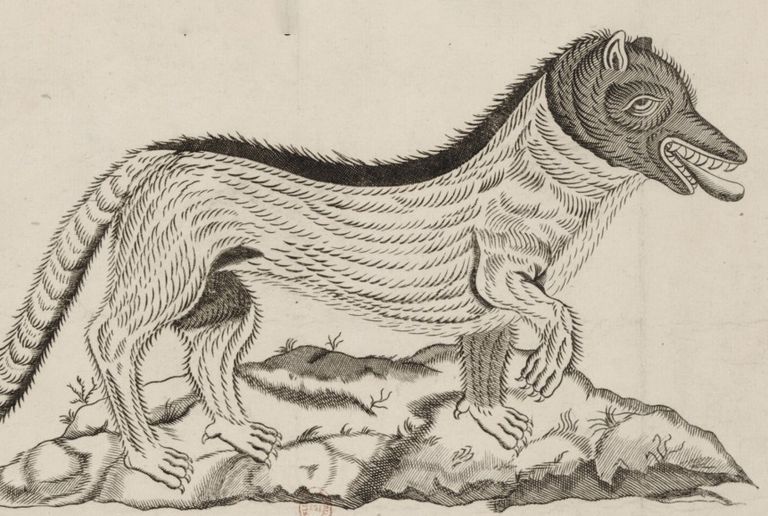
Source: alamy.com
The experts at the Smithsonian had their own opinion on the matter, noting that Lafont, who had worked with Duhamel, believed it was “much bigger than a wolf” and had the characteristics of a hyena. What strange beast was this? The d’Ennevals’ hunt was about to uncover a strange and unexpected creature.
The Final Hope to End the Gévaudan Beast's Reign of Terror
For years the Gévaudan Beast had terrorized the French countryside, eluding all attempts to capture or kill it. The d’Ennevals, like Duhamel, had failed, so now the King of France had one last hope. He sent François Antoine, a 71-year-old trusted bodyguard, to face off against the fearsome creature.
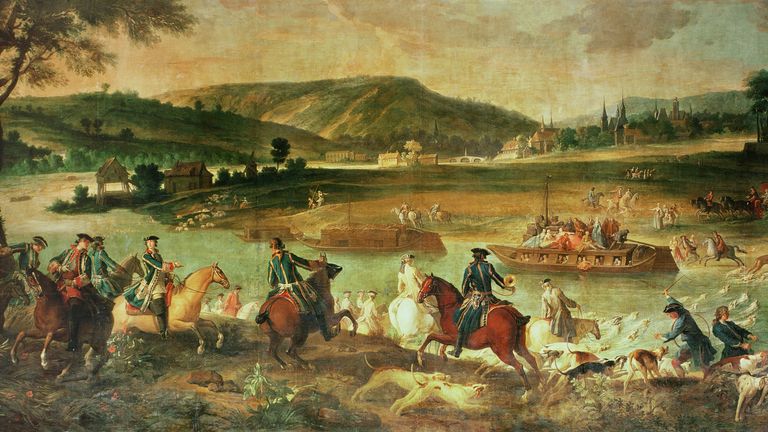
Source: Art Images via Getty Images
Antoine was the final attempt to bring an end to the Beast’s appalling reign of terror. But would his bravery and skill be enough to save the people of Gévaudan?
The Beast of Gévaudan: An Unforgiving Challenge
It was no small feat trying to capture the Beast of Gévaudan. As one of the hunters, d’Enneval, noted after surveying the animal’s habitat, “This beast will not be an easy catch.” Indeed, the terrain offered the beast several strategic advantages, making it a formidable opponent to the hunters.
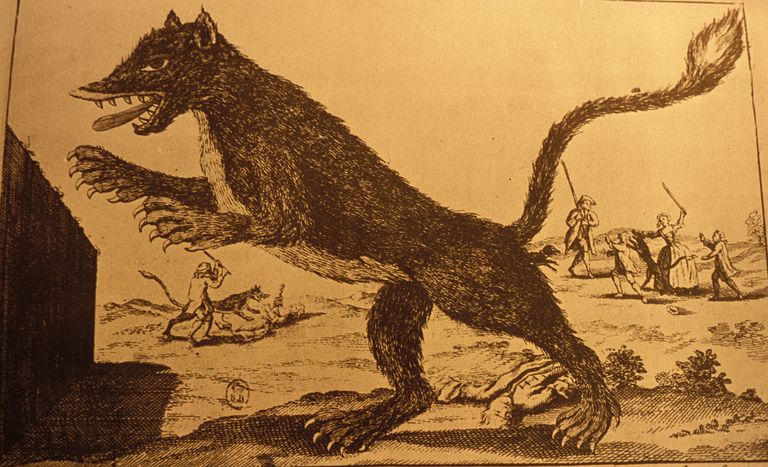
Source: Patrick AVENTURIER/Gamma-Rapho via Getty Images
The task was far from simple and yet, as history records, they persisted in their mission. But would their courage and dedication ultimately pay off?
Hunting the Beast of Gévaudan, a Test of Skill and Determination
The treacherous terrain of Gévaudan proved to be the perfect hideout for its infamous occupant – the Beast of Gévaudan. With its plethora of swamps and rocky, wooded land, the task of hunting the beast was far from easy.
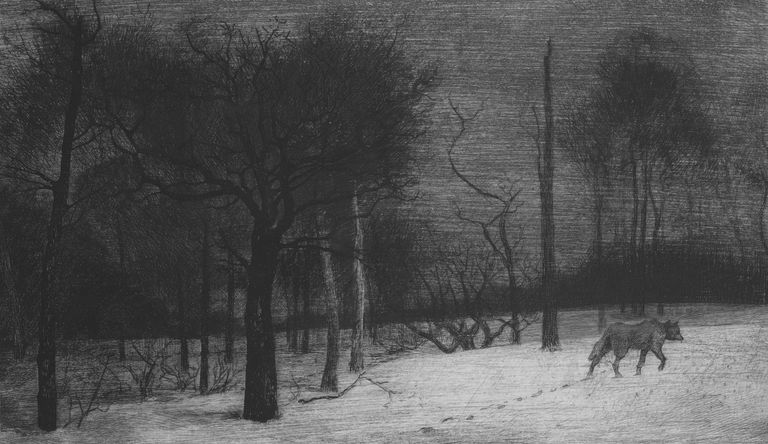
Source: Smith Collection/Gado/Getty Images
Not to mention, the extreme weather conditions of bitterly cold winters and rain-soaked summers that posed an additional challenge to the would-be hunters. It would take true grit and determination to survive this arduous hunt and capture the Beast of Gévaudan.
The Hunt for the Beast of Gévaudan: Antoine's Epic Pursuit
Antoine was determined to capture the infamous Beast of Gévaudan. Undeterred by the daunting task, he assembled a small squadron of men, and together with his son set off on the hunt. The party scoured the forests, searching for the elusive creature.
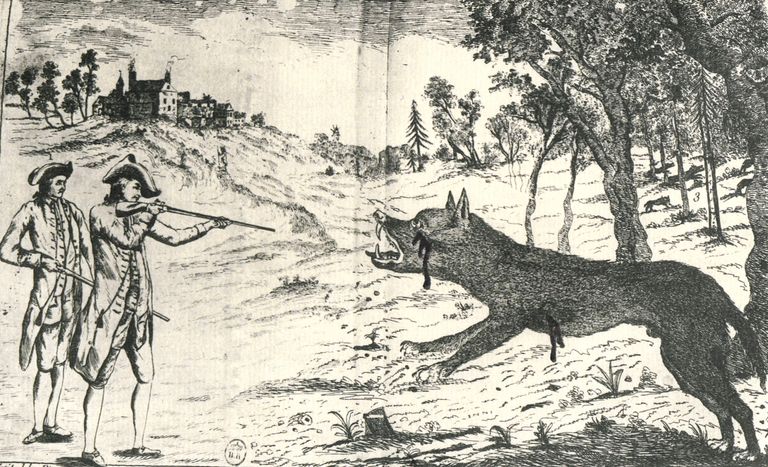
Source: Gallica Digital Library/Wikimedia
Then, one fateful September day, Antoine spotted an enormous wolf and shot it dead. He declared that he had killed the Beast of Gévaudan, but some were not convinced. Was this really the creature responsible for terrorizing the region? Only time would tell.
Village Hero Nabs Rogue Wolf and Ends Reign of Terror!
Antoine was a true hero, and his claim that he killed the animal responsible for the wave of attacks came to be accepted, although there were no human remains discovered in its gut. The creature was stuffed and sent to King Louis’ court.

Source: Universal History Archive/Getty Images
As a reward, Antoine was bestowed with many honors, as well as a generous sum of money. The attacks subsided, and it seemed he had finally put an end to the terror that the animal had caused.
A Wolf or a Beast? The Great Mystery of Gévaudan
Antoine seemed to have put an end to the reign of terror by the mysterious beast that he had “proved” was a wolf. Yet, after two months of tranquility, the attacks started again. Despite this, Antoine remained confident that he had killed the Beast of Gévaudan and the King and his court agreed, claiming that the terrifying animal was indeed dead.

Source: adoc-photos/Corbis via Getty Images
Was it really a wolf that caused all the mayhem, or was it something else? The great mystery of Gévaudan continues to remain unsolved.
The Desperate Search for the Beast of Gévaudan
Another summer of dread descended upon Gévaudan in 1767. Deadly attacks had become too frequent to ignore, and local aristocrat the Marquis d’Apcher was convinced the beast was still on the prowl. Determined to uncover the truth, the Marquis organized another hunt to capture the creature.
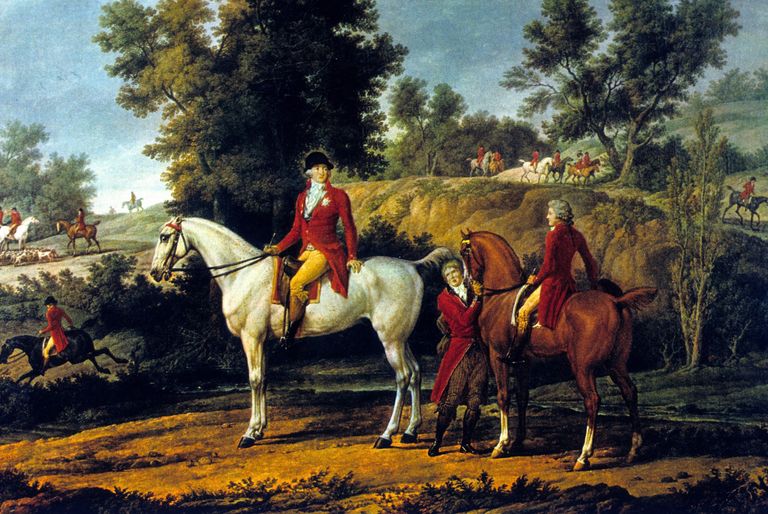
Source: Archiv Gerstenberg/ullstein bild via Getty Images
The entire region was on edge, as the beast had eluded capture for years. Could the Marquis be successful in his endeavor? Would the beast of Gévaudan finally be brought to justice?
Unlock the Mystery of the Beast: Jean Chastel's Story
When Jean Chastel, a local farmer, joined the hunt for the beast led by François Antoine, it was not his first time trying to track down the creature. The previous expedition had been a disaster, with Chastel leading his group into a marsh and incurring the wrath of Antoine.
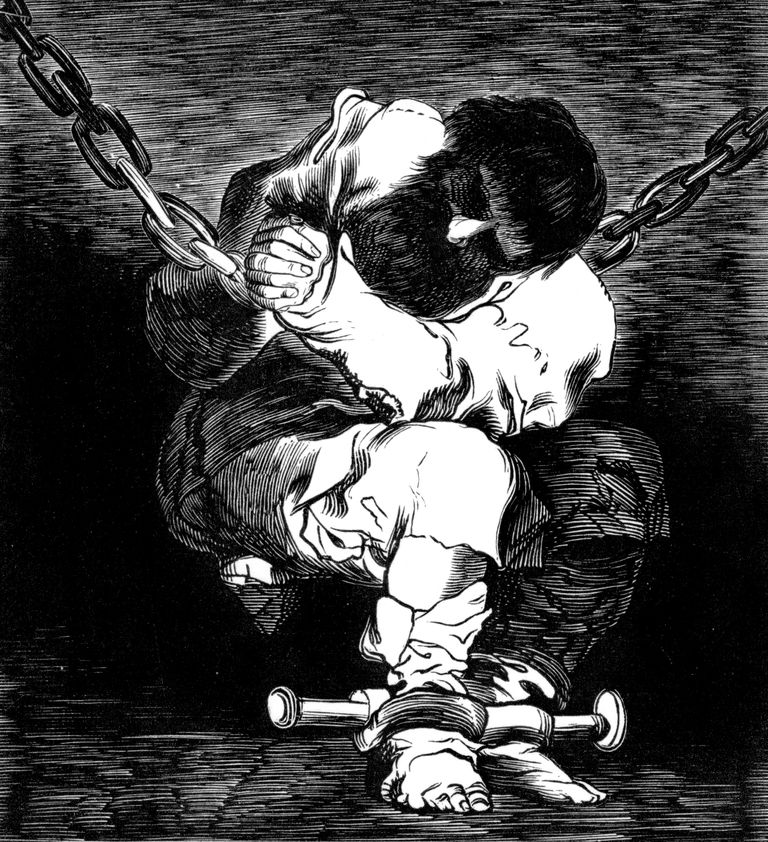
Source: wynnter/Getty Images
As a result, he had been thrown into jail for his incompetence. Now, with d’Apcher’s hunt, there was a chance for Chastel to redeem himself and hopefully uncover the truth behind the mysterious beast.
A Heroic Victory: Chastel's Triumph over the Beast
In June 1767, despite his previous mistake, the Marquis allowed Chastel to join his hunting party. They followed up on a report of an attack by the beast and tracked it down to a forest. Here, Chastel courageously faced the fearsome creature and succeeded in bringing it down with a single shot.

Source: adoc-photos/Corbis via Getty Images
An autopsy later revealed that the beast had human remains in its stomach. This heroic victory by Chastel resulted in his name being forever etched in history.
Unraveling the Mystery of the Beast of Gévaudan
The mysterious Beast of Gévaudan that terrorized Gévaudan for three years left no survivors to tell its tale. Even after it was finally killed by Chastel, the debate over what the creature was continued. Was it a wolf, as some suggested, or something else?
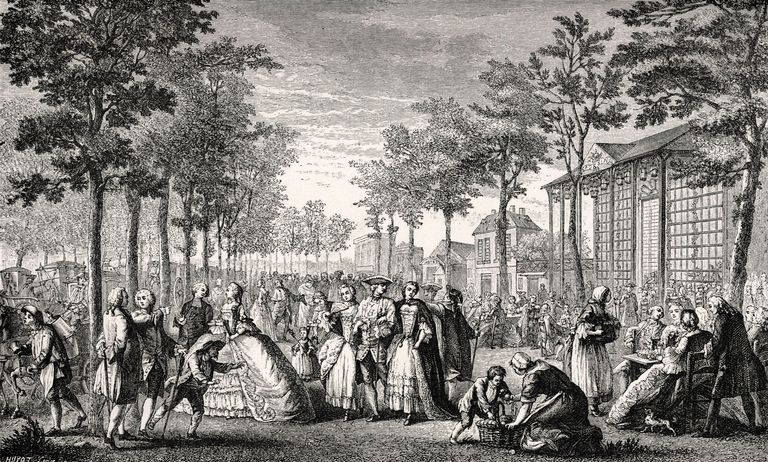
Source: Culture Club/Getty Images
Reports of the physical features of the Beast seemed to contradict it being a wolf, leading to further speculation and mystery. Even after its death, the Beast of Gévaudan continues to fascinate as its identity remains a mystery.
Uncovering the Mystery of the Beast of Gévaudan
In a bid to reveal the truth behind the legend of the Beast of Gévaudan, the animal’s corpse was taken to Paris and presented to the King. Famous naturalist Georges-Louis Leclerc, the Comte de Buffon, was called upon to perform an autopsy, however, his examination of the body was brief and inconclusive.

Source: Fine Art Images/Heritage Images/Getty Images
After the examination, the remains were quickly buried, meaning further scientific analysis was out of the question. The mystery of the Beast of Gévaudan remained unsolved.
Uncovering the Mystery of the Fearsome Beast: Was it a Wolf or Something Else?
Even in the absence of the possibility of further autopsies being carried out, theories continued to abound as to the creature’s true identity. Many who claimed eyewitness accounts of the beast, reported that it was unlike any other wolf, leading to further speculation.
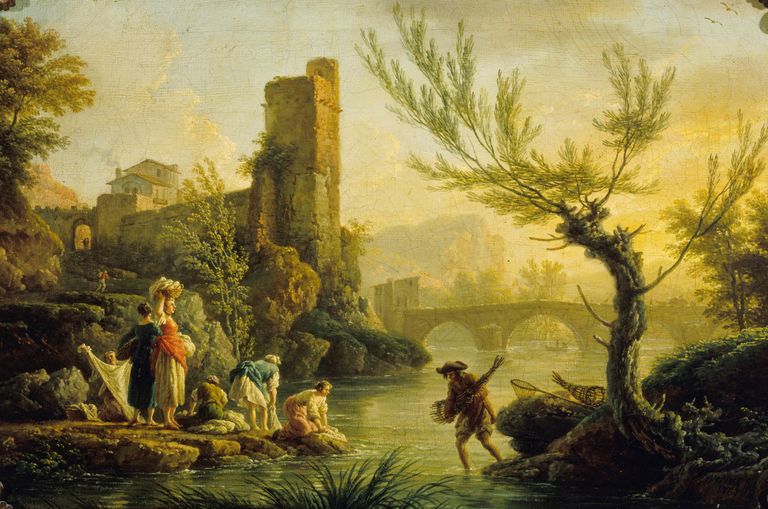
Source: Heritage Art/Heritage Images via Getty Images
What was this terrifying creature? Was it simply a large, atypical wolf, or something more sinister? Join us as we explore the possibility of uncovering the truth behind this legendary monster.
Uncovering the Mystery of the Beast of Gévaudan: Was it Really a Wolf?
The Beast of Gévaudan has been a source of mystery and intrigue for centuries. Described as being the size of a calf or horse, with a reddish-gray coat and long panther-like tail, the creature was said to be “much bigger than a wolf” by one hunter.

Source: Sepia Times/Universal Images Group via Getty Images
What did this mysterious animal really look like? Was it just a giant wolf, or something far more incredible? Join us as we explore this legendary creature and unlock its secrets.
Mysterious Murders: Could They Be the Work of an Animal?
For years speculation about the identity of this mysterious killer has continued unabated. Some wilder theories even suggested the killer may have been a man dressed in animal skin. However, this notion was not supported by any of the eyewitness accounts and seems highly implausible.
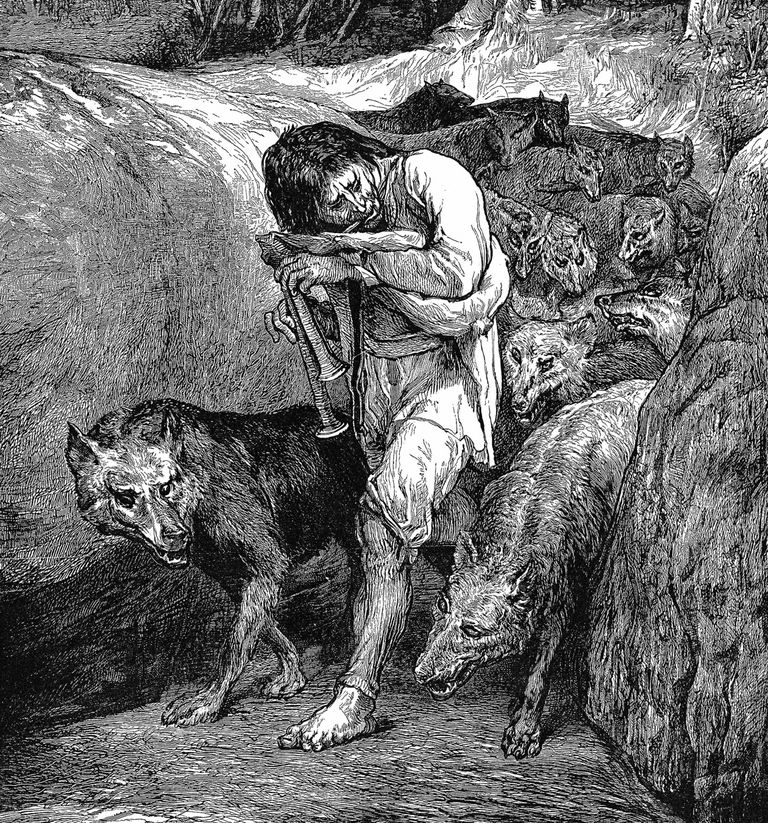
Source: Universal History Archive/Getty Images
Yet, others theorize that the attacks could have been orchestrated by a trained animal acting the command of a human. While this too seems far-fetched, it is impossible to rule out the possibility altogether.
Unveiling the Mystery Behind the Beast of Gévaudan
Since its killing spree in the 1700s, the enigmatic Beast of Gévaudan has been shrouded in mystery and speculation. Historians, scientists, pseudoscientists, and conspiracy theorists have all offered their own theories on the beast’s true identity.
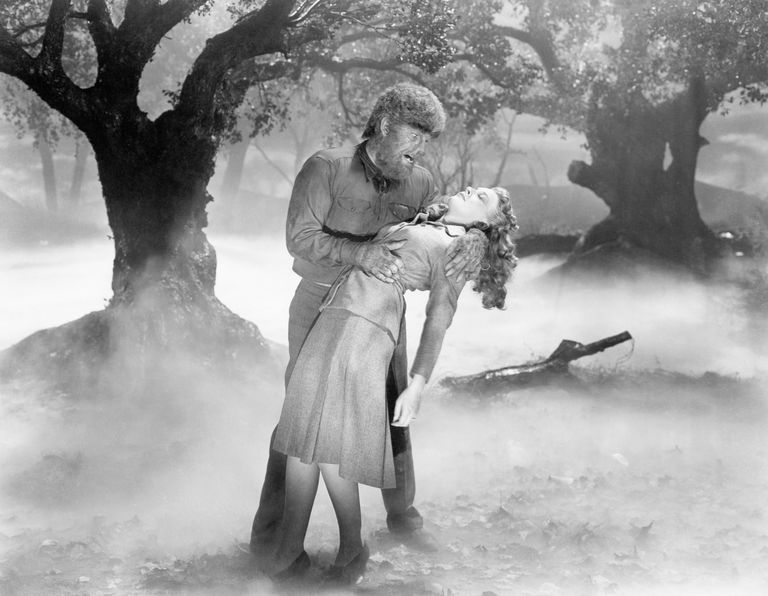
Source: George Rinhart/Corbis via Getty Images
Some suggest it was an ancient animal that survived, while others believe it was an armored fighting dog or a hyena. Others even speculate it was a werewolf! No matter the answer, the true identity of the Beast of Gévaudan remains one of the greatest mysteries of the ages.
Lions and Hyenas - Could They be the True Villains of the Beast of Gévaudan?
Could a lion or hyena be the mysterious Beast of Gévaudan? Although it seems unlikely, it’s not impossible that a hyena escaped from a wealthy man’s menagerie and roamed the French countryside. Although as hyenas aren’t known for attacking humans, a lion could be a more plausible suspect.

Source: The Print Collector/Getty Images
The Beast of Gévaudan is one of the most famous unsolved mysteries of all time, and the truth of who – or what – is really behind it remains a mystery to this day.
The Beast of Gévaudan: Was It a Lion?
Could the mysterious Beast of Gévaudan really have been a lion? According to biologist Karl-Hans Taake, this is a very real possibility! In his book on the topic, he explains that a lion could have escaped from a private zoo, and the hunting pattern of the creature pointed to a lion.

Source: KEYSTONE-FRANCE/Gamma-Rapho via Getty Images
He cites the fact that the way it attacked its victims was similar to lions in the wild as evidence for his theory. So could it really have been a lion lurking in the forests of Gévaudan all those years ago?
Wolves - the Beast of Gévaudan's True Identity?
Speculating on the identity of the Beast of Gévaudan has kept many people enthralled. However, according to historian Smith, the most probable explanation is a wolf. Smith, who spoke to Smithsonian Magazine, said, “the best and most likely explanation is that Gévaudan had a serious wolf infestation.”

Source: John Locke Foundation/YouTube
This makes sense when you consider that between the 17th and 19th centuries, France recorded over 9000 wolf attacks. Therefore, it appears that the Beast of Gévaudan was, in fact, a wolf.
Uncovering the Myth of the Beast of Gévaudan: Unmasking a Terrifying Tale
The Beast of Gévaudan is a creature shrouded in mystery, with evidence often muddled and unclear. This legend of a ferocious animal has echoed through history, with tales of it instilling fear in all who heard them. But is the Beast of Gévaudan a true story, or just a myth?
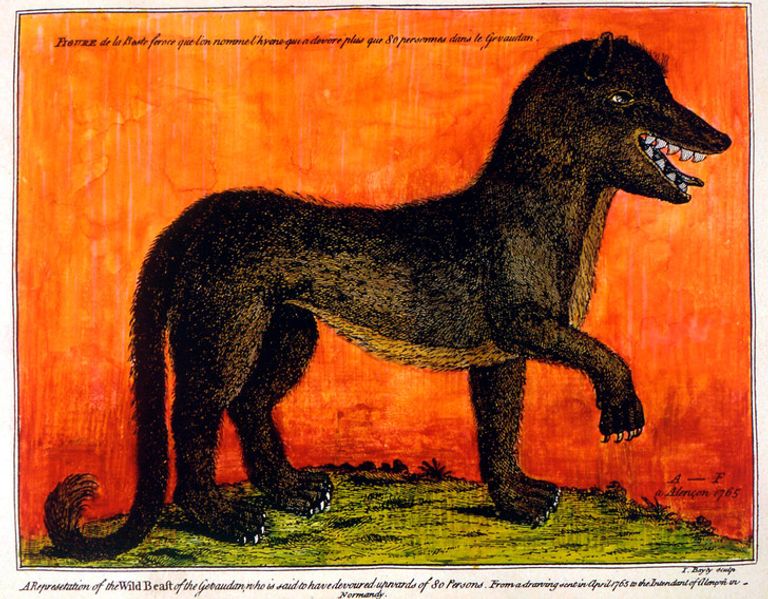
Source: "AF"/Wikimedia Commons
This wolf-like monster reportedly terrorized France for years, but could it have been something else? Discover the truth behind the Beast of Gévaudan and uncover whether this fearsome creature was real or just a legend.
Unearthly Terror on the Isle of Skye: The Beast of Odal
Traveling through the Odal Pass on the Isle of Skye, off the coast of Scotland, can be a frightening experience. The locals whisper of an otherworldly spirit that haunts the area, the Beast of Odal, rumored to have the power to change shape and make unearthly screeches.
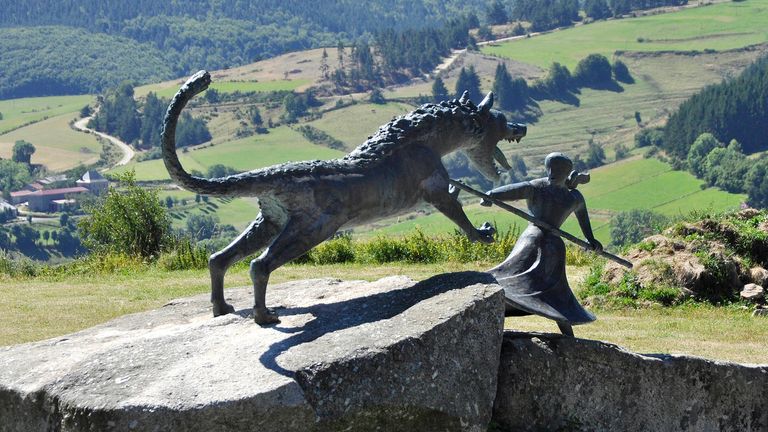
Source: Filou-France/Getty Images
When the road was first constructed, the laborers were so scared by the creature’s cries that they fled in terror. Even today, the Beast of Odal lives on in legend, reminding travelers of the eerie mystery of the pass.
The Final End of the Beast of Odal
The tales of the Beast of Odal had been circulating for years. Travelers along the Odal Pass were often mysteriously injured and locals believed the monster was responsible. Sightings of the beast took many forms – a one-legged man, a dog – yet no one could be sure of its true identity.
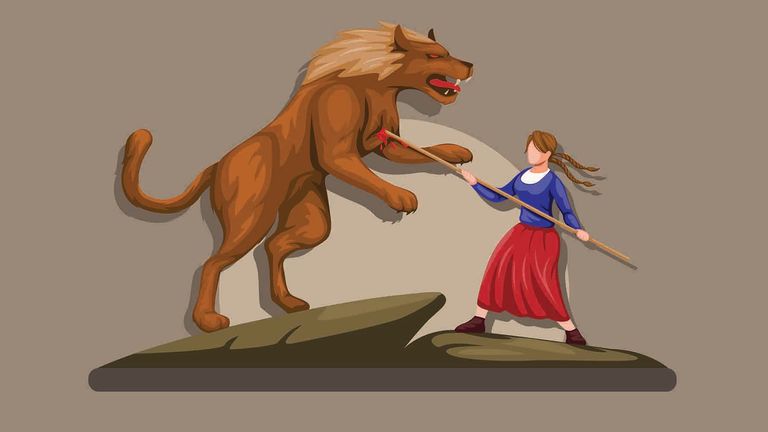
Source: Aryo Hadi/Getty Images
Then came the fateful day when a traveler was found dead with two puncture marks, too precise to be caused by a human hand. After this grisly discovery, the Beast of Odal was never heard of again.
Unveiling the Legendary Gulon: A Beast of Myth and Mystery
Legend tells of a remarkable creature with the body of a lion, the tail of a fox, and the head and ears of a cat – the gulon! We have a 16th-century Swedish chronicler, Olaus Magnus, to thank for bringing this mystery animal to life in his 1555 work A Description of the Northern People.
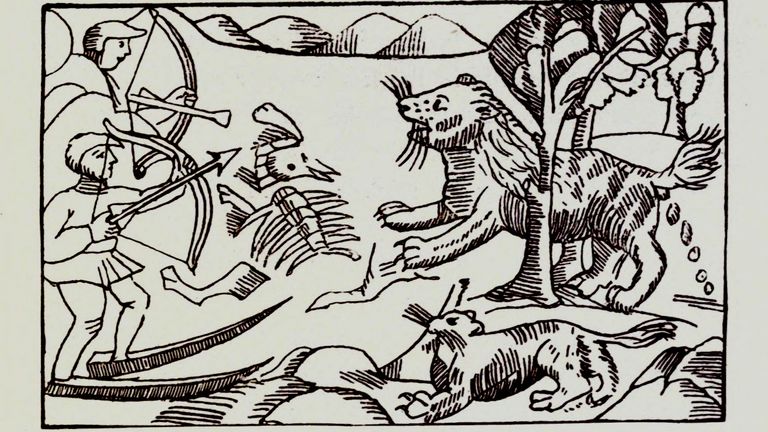
Source: Biodiversity Heritage Library/Flickr
Described as an incredibly agile hunter, the gulon has captivated imaginations for centuries. Mysterious and elusive, this mythical beast is still shrouded in mystery to this day.
Gluttons of the Wild: The Insatiable Habits of the Gulon
The gulon is a creature that leaves much to be desired when it comes to its dining habits. They feasted on animal remains until they could eat no more, yet they were still not satisfied. To make room for more food, they would squeeze their bodies between two close standing trees.
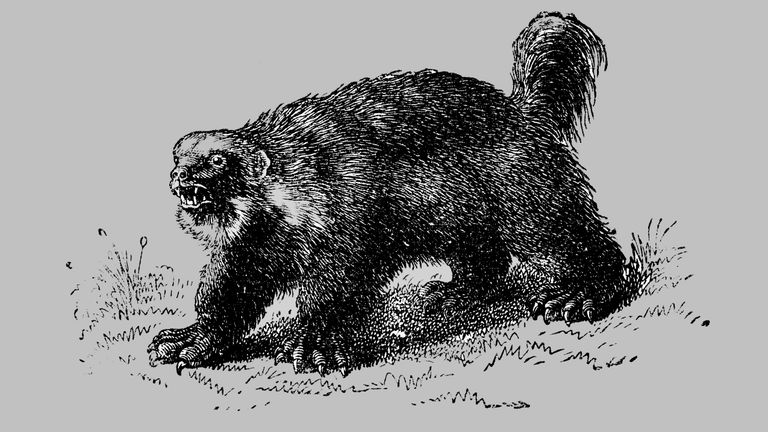
Source: stocksnapper/Getty Images
This revolting buffet carries on until they feel they can eat no more. Their insatiable hunger has earned them the invidious title of ‘gluttons of the wild’.
Unveiling the Mysterious Rompo: The Unattractive Beast from the Medieval Times
The mysterious rompo is a beast that was said to have lived in India and Africa during the medieval period. It was believed to be a combination of several different animals, including a hare, with human-like ears, and a horse’s mane, and a badger’s front limbs and hindquarters.
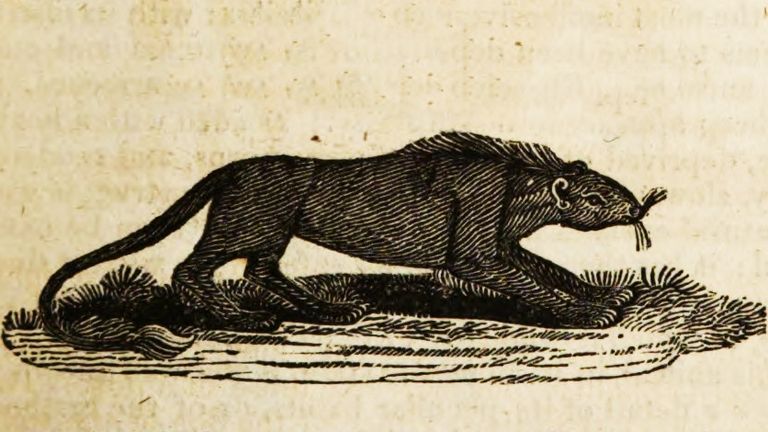
Source: J. Maclock/Wikimedia Commons
It also had one distinctly unattractive characteristic. The reason for this remains a mystery to this day. Unveil this mysterious creature and learn more about its unique characteristics.
A Monstrous Diet: Unsavory Habits of the Rompo
Though it was only around 3 feet long, from nose to its behind, the Rompo was a monstrous creature when it came to its diet. It feasted on the cadavers of humans. And it had an extremely unsavory habit that made it even more reviled – in desperate times, it would dig up human graves.
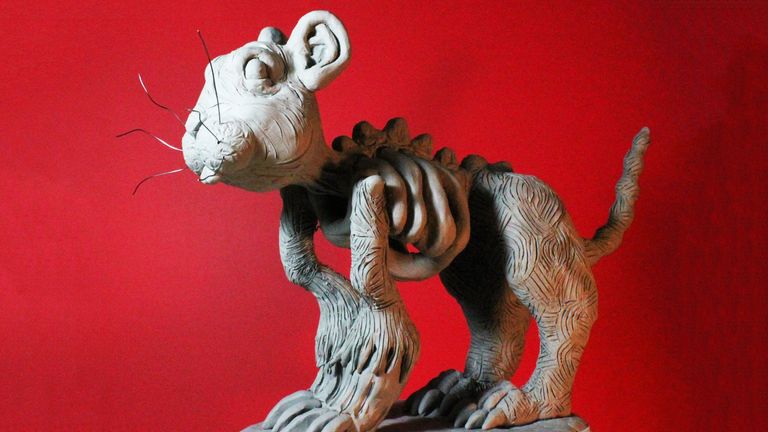
Source: Rob McDaniel/Twitter
Though small in size, the Rompo was a truly revolting beast, in both looks and nature, that gave the locals a good reason to be repulsed by it.
Unveiling the Myth of Mimick Dogs
Unveiling the myth of Mimick Dogs, a species of canine known as Canis getulus, first mentioned in 1551 by Swiss Naturalist Conrad Gessner. Reportedly found in parts of North Africa and Europe, these dogs were said to possess extraordinary powers that set them apart from their peers.
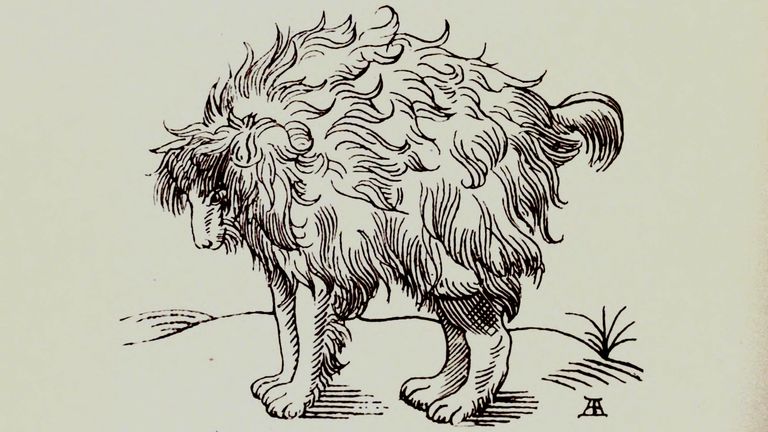
Source: Biodiversity Heritage Library/Flickr
The name ‘getulus’ comes from the Latin word ‘getulus’, meaning ‘mimicking’, hinting at their ability to replicate the sounds they heard. Although the authenticity of such claims remains debatable, the legend of Mimick Dogs continues to fascinate us to this day.
Marvelous Mimick Dogs: A Sight to See!
Have you ever seen a dog that could talk, act and move like a human? If not, then you never saw a mimick dog! Mimick dogs were an extraordinary species that looked just like your everyday canine but had an incredible ability to mimic humans.
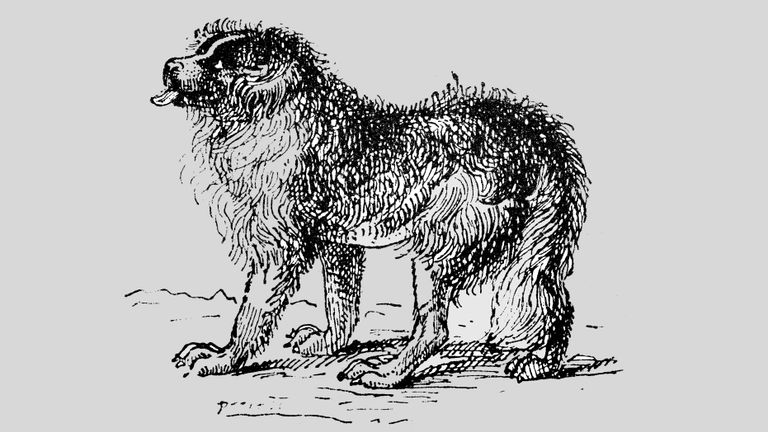
Source: ilbusca/Getty Images
Not only could they reputedly talk in the same manner as humans do, but also move and act in a very human-like way. It was truly a remarkable sight to behold!
Beware the Fearsome Crocotta!
The Crocotta is a legendary beast that has been the subject of fear and fascination for centuries. Said to have combined the physical characteristics of a dog, hyena, and wolf, this ferocious predator roamed the lands of either Ethiopia or India. But, what was most frightening about this beast was its appetite for human flesh, making it a creature of nightmares!
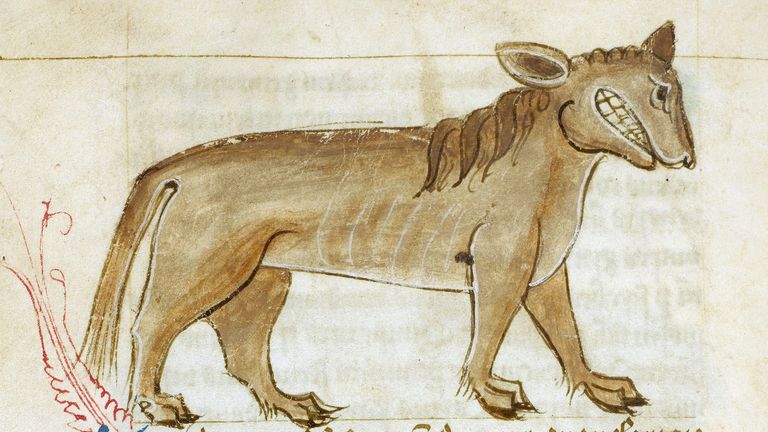
Source: Kongelige Bibliotek/Wikimedia Commons
Those unfortunate enough to cross its path had to contend with its strength and viciousness – a battle they were sure to lose. Keep your distance and be wary of the Crocotta!
The Cunning of the Crocotta: An Alarming Tale
The Crocotta was no ordinary beast; it boasted a cunning that made it even more deadly. Porphyry of Tyre, a Roman-era philosopher, wrote that the crocotta “spoke in a manner so human and this without a teacher, as to go to houses and call out that person whom he knew he could easily vanquish.”
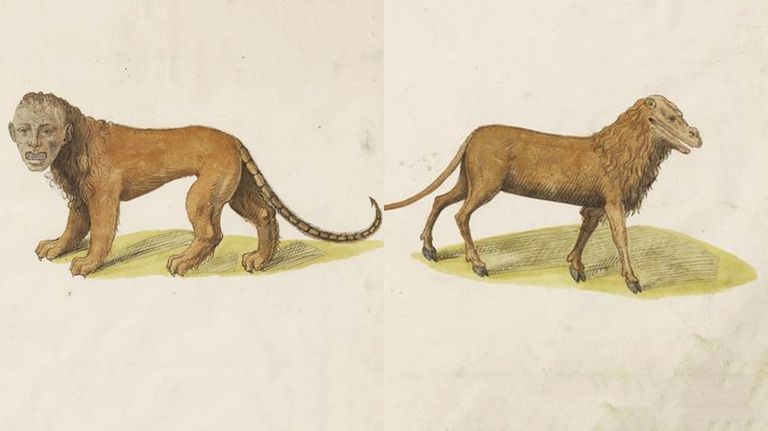
Source: via Wikimedia Commons
It was almost as if the creature was capable of discerning its prey’s weaknesses. As if its ferocity and power weren’t enough, this creature also possessed an uncanny intelligence that made it all the more dangerous.
Uncovering the Mystery of the Strange Marine Creature
Unveiling a strange tale, it was French naturalist Pierre Belon first described a bizarre marine creature in his 1553 work De Aquatilibus. According to numerous eyewitnesses who saw the creature near the city of Den Elepoch in Norway, it did not live more than three days and did not speak, yet emitted great, plaintive signs.

Source: Johannes Sluperius/Wikimedia Commons
This mysterious creature has left the world in awe, begging the question: What could it have been? Belon’s work may hold the answer to this centuries-old mystery.
A Mysterious Sea Creature Gets a Happy Ending
From strange descriptions to amazing captures, the story of the sea monk is truly an incredible one. But what happened when one was captured and presented to a Polish king? With its silent gestures, the sea monk begged to be released.
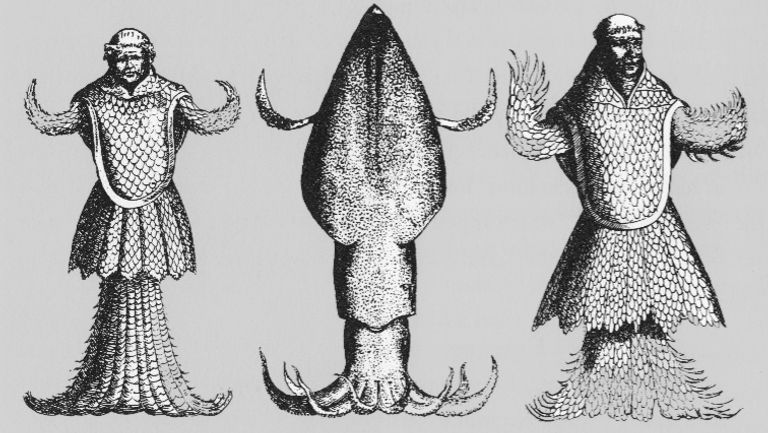
Source: Japetus Steenstrup/Wikimedia Commons
Fortunately, the monarch, who was said to have a good heart, granted its wish and set it free. This is a unique monster story with a happy ending, for this most mysterious of sea creatures.
Unveiling the Mystique of the Hircocervus: A Journey Back in Time
Travel back in time to over 2500 years ago, when Plato’s great ancient Greek work of philosophy, Republic, first mentioned the Hircocervus. This legendary creature was also part of the Middle Ages’ lore, and its first mention in English was in 1398.
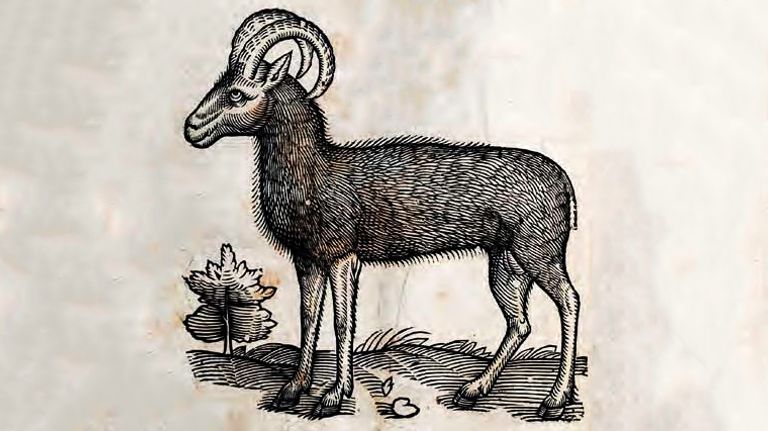
Source: University of Houston Libraries/Wikimedia Commons
But just what was Hircocervus? Was it a mythological creature or something more real? Join us as we unravel the mystery of the Hircocervus and discover the truth behind this most enigmatic of animals.
The Unusual Trusty Servant - The Hircocervus
Once an odd combination of a goat and a stag, the Hircocervus has an interesting history. Arthur Cleveland Coxe wrote about it in his 1856 book Impressions of England after seeing a painting of the creature from 1579. It was described as “part man, part porker, part deer and part donkey, with a padlock on its mouth”.
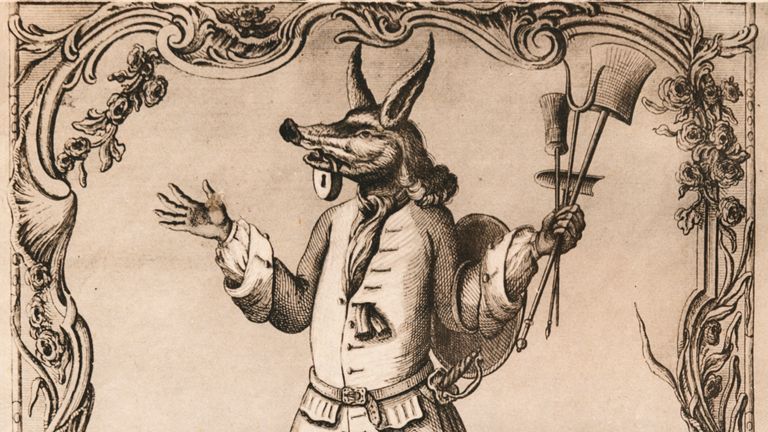
Source: Print Collector/Getty Images
Despite its strange appearance, the Hircocervus was surprisingly gentle and was even known as the “trusty servant”. Truly an intriguing creature with a fascinating history.
The Strange Tale of the Vegetable Lamb of Tartary
No, lambs are not vegetables! Unless you’re talking about the Vegetable Lamb of Tartary, an unusual medieval creature that has captivated people’s imaginations for centuries. According to the 14th-century book, The Voyage and Travels of Sir John Mandeville, Knight, this bizarrely fascinating creature was described as a combination of a lamb and a vegetable.
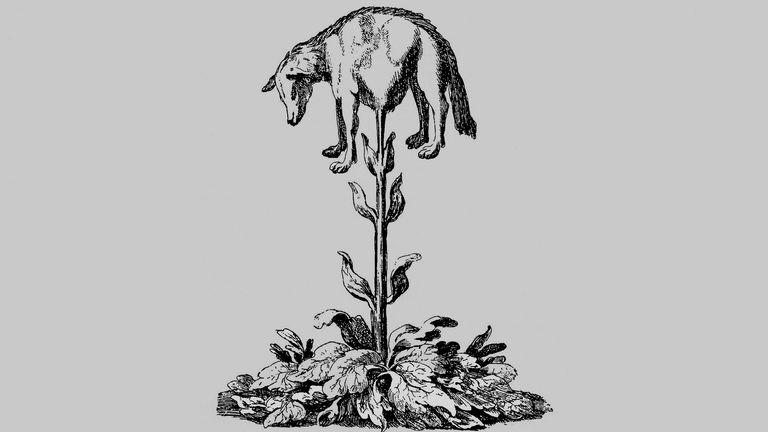
Source: via Wikimedia Commons
For hundreds of years, this creature has continued to intrigue and mystify people with its hybrid characteristics. Have you ever heard of this peculiar creature?
Unbelievable: A Vegetable Lamb That Couldn't Roam!
It’s a mystery who wrote the Mandeville travel book, but one thing’s for sure – they had quite the eye for the bizarre and unusual! Take, for example, the Vegetable Lamb, found in Central Asia and referred to as the Borametz by the Tartars.
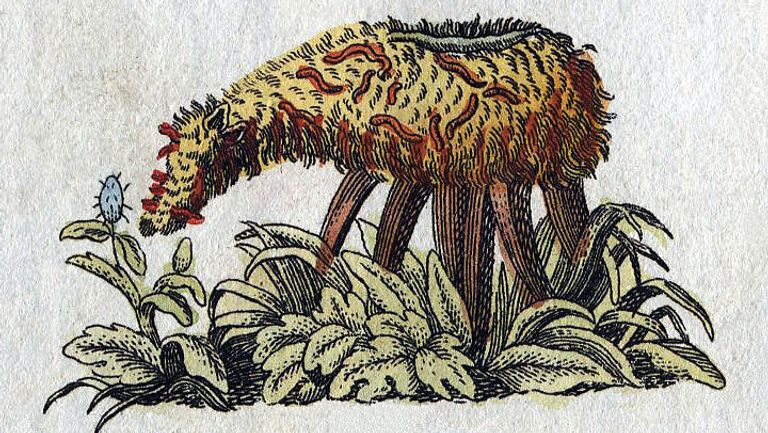
Source: Friedrich Johann Justin Bertuch/Wikimedia Commons
It looked like a young sheep, but it was attached to a plant by its umbilical cord – it couldn’t go further than the plant allowed. Separate it from the plant and it would die. Lamb chops, anyone?
Unbelievable Qualities of the One-Legged Monopods
Have you ever heard of the mythical creature called ‘monopod’? It is an amazing figure with a unique quirk – a single foot and one leg. This creature can be traced back to Roman mythology, and was known as ‘skiapodes’ by the Romans. Despite the disadvantage of having only one lower limb, these monopods possessed incredible and surprising qualities.
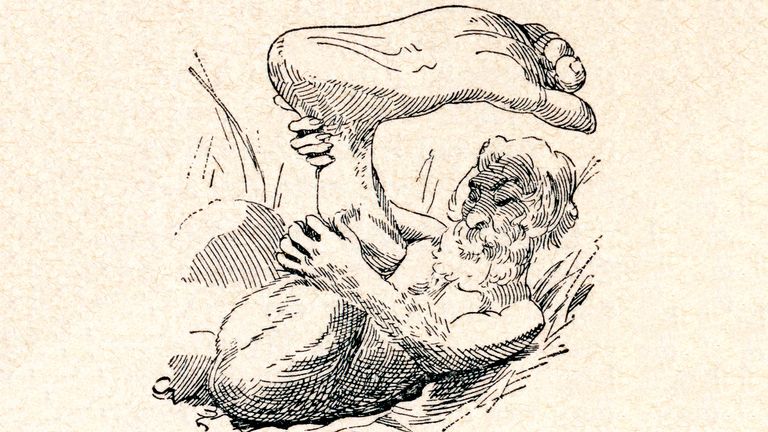
Source: Universal History Archive/Universal Images Group via Getty Images
Pliny the Elder, who died in 79 A.D due to the Mount Vesuvius eruption, had written about them. So, let’s take a closer look at the amazing qualities of this one-legged creature!
One Footed Warriors - The Monopods
The Monopods, which were native to Ethiopia, were said to be fleet of foot and a formidable force on the battlefield. But their most peculiar feature, as described by Pliny, was their habit of lying on their backs in the hottest of temperatures, shielding themselves from the sun with the shade of their own feet!
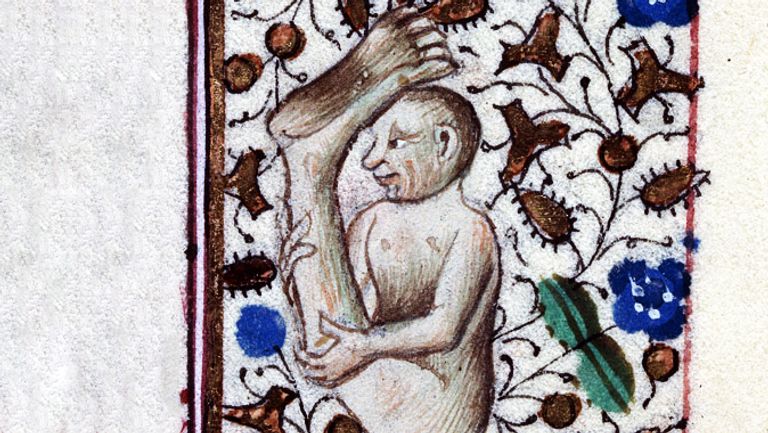
Source: Maître du Prince de Piémont/Wikimedia Commons
What an incredible sight they must have been! Despite their small stature, these warriors were fierce, brave and resourceful, using their imagination and creativity to protect themselves against their adversaries. Truly an amazing creature!
Beware of the Medieval Monster: The Blemmyae
Be afraid! Be very afraid! Lurking in the shadows of ancient Greece and medieval times is the monstrous Blemmyae – a beast so terrifying that you definitely wouldn’t want to encounter it. The origin of this ghastly creature dates back to ancient Greece, however, it was Sir John Mandeville who gave us the Middle Ages’ version of the Blemmyae.
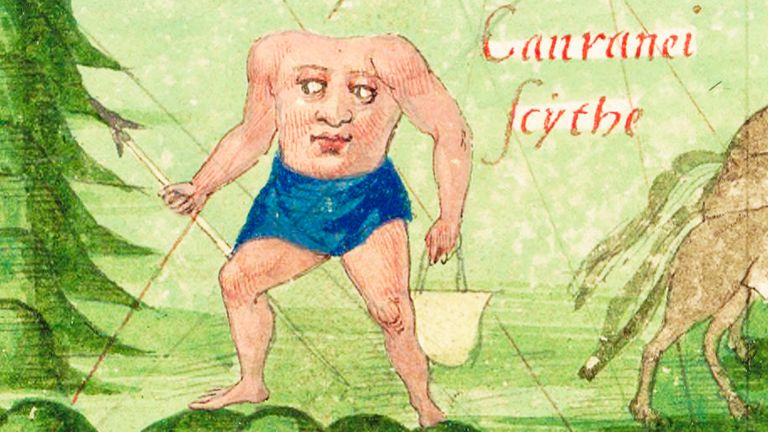
Source: Guillaume Le Testu, Le Havre/Wikimedia Commons
Through his dubious narration, he made the Blemmyae sound like a beast to be avoided at all costs. So, beware of the medieval monster – the Blemmyae.
Headless Wonders: The Bizarre Tales of the Blemmyae
What would you do if you encountered a creature without a head? Believe it or not, this bizarre creature actually existed, according to Mandeville. He wrote the Blemmyae are a headless folk who have eyes on their shoulders and a mouth shaped like a horseshoe on their chest.
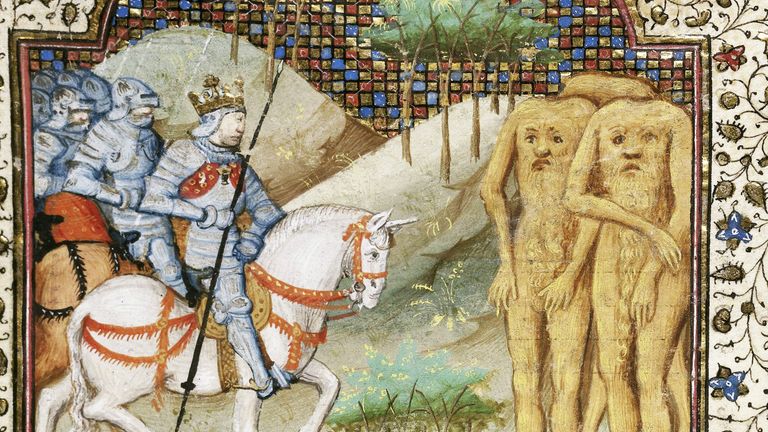
Source: Master of Lord Hoo's Book of Hours/Wikimedia Commons
Others even have their facial features on their backs, while some have heads with flat fronts and two holes and a “flat lipless mouth.” These astounding creatures would truly have been something to behold!
Unveil the Mystery of the Nue: Unearth the Legendary Japanese Chimera
Have you ever heard of the Nue, the mythical Japanese chimera of the Middle Ages? This strange creature has been around since the 8th century B.C., with legends and tales of its mysterious powers persisting through to modern times. The Nue is a unique creature that combines the features of different real animals, and it has been an enigma to many people over the centuries.
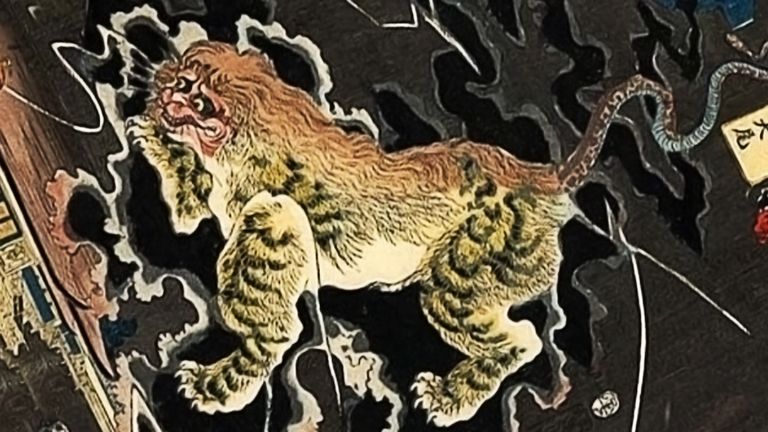
Source: via Wikimedia Commons
Uncover the secrets of the Nue, and learn more about these mythical monsters collectively known as yokai in the Middle Ages!
The Mystical Nue - Bringing Misfortune in its Wake
Myths and tales of the mysterious nue have been passed on through generations. This beastly creature had the legs of a tiger, the tail of a snake, the head of a monkey, and the body of a tanuki – also known as the Japanese raccoon dog.
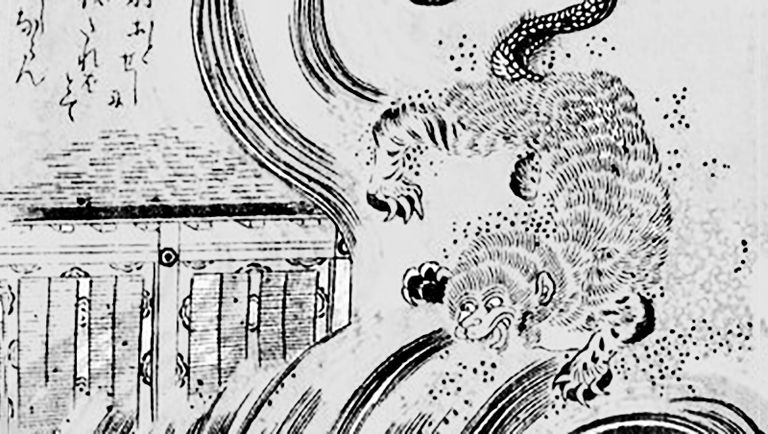
Source: Toriyama Sekien/Wikimedia Commons
When a nue appeared in the night sky, it was said to bring ill-fortune with it, and it was surrounded by black clouds and had a bird-like call. Those who encountered this mythical creature were filled with dread, as its appearance was believed to signify dire consequences.
Dare to Tread Where the Ahuizotl Lurks
Dark tales of terror lurk in the depths of South American folklore. In medieval times, when the Aztecs reigned, these tales centered around the ahuizotl – a mysterious aquatic monster. Described as a smooth-skinned dog with an elongated tail, this creature was said to have five human hands – four on its limbs and one on its tail.
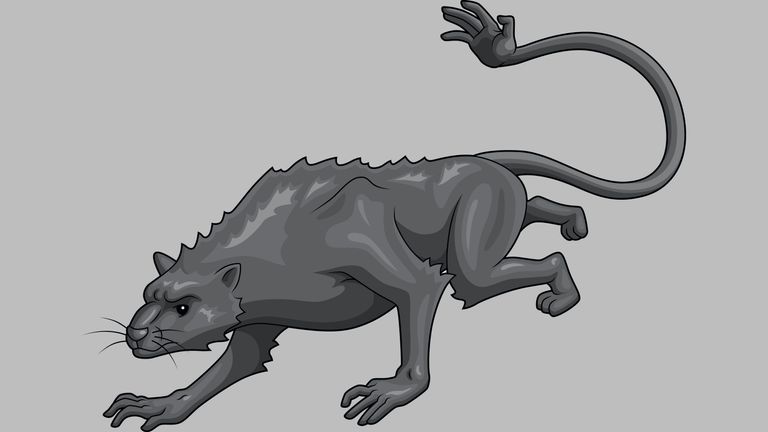
Source: johnerickson/Getty Images
So if you ever find yourself in the murky waters of South America, beware! There might just be an ahuizotl lurking beneath the surface.
Danger Lurking in the Waters: The Perils of the Ahuizotl
The ahuizotl is a truly terrifying creature, capable of luring unsuspecting humans to the edge of a lake or stream, before viciously dragging them into the water. With the inevitable result of drowning, these beasts were a feared menace. People living near bodies of water would take extreme caution when approaching the shoreline, knowing that an ahuizotl could be lurking, ready to strike.
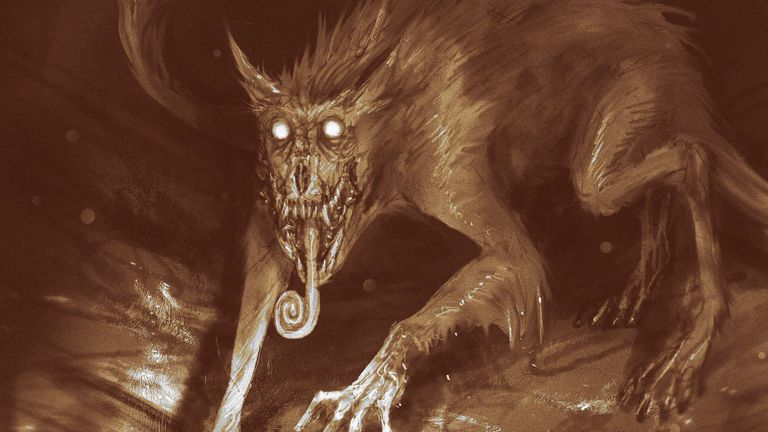
Source: David Romero/Twitter
Thankfully, these monstrous creatures are now nothing more than legend, but the fear they once instilled is legendary.
Unveiling the Mystery of Cynocephalic Humans
Have you heard of the cynocephalic? You’d be surprised to know that they are entirely human in form, except for a rather key feature – the head of a dog! This mythical beast was widely believed to be living in distant lands, such as Africa, India, China or Egypt.
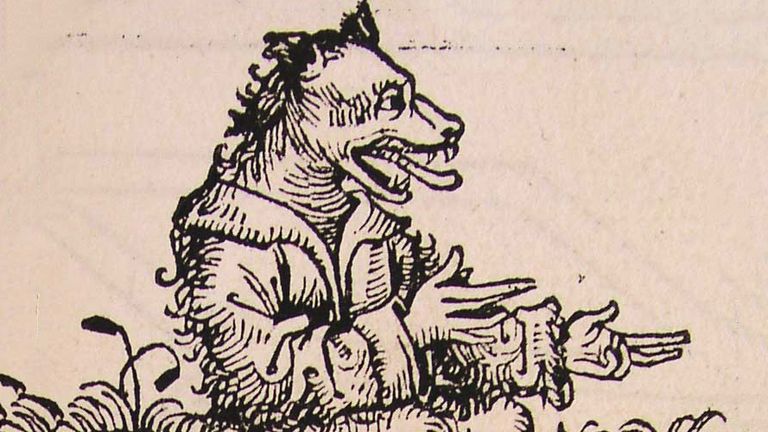
Source: Hartmann Schedel/Wikimedia Commons
It was therefore no surprise that nobody saw them in medieval European villages! But, did they actually exist? Let’s explore the mysterious world of cynocephalic humans and find out!
Beware of Dog-Headed Monsters!
Would you have been brave enough to take a chance and face the dog-headed monsters? According to The Travels of Marco Polo, the great 13th-century explorer, these creatures existed on the Andaman Islands and were described as “big mastiff dogs”. While their human body made them seem less dangerous, one still had to be wary of them.
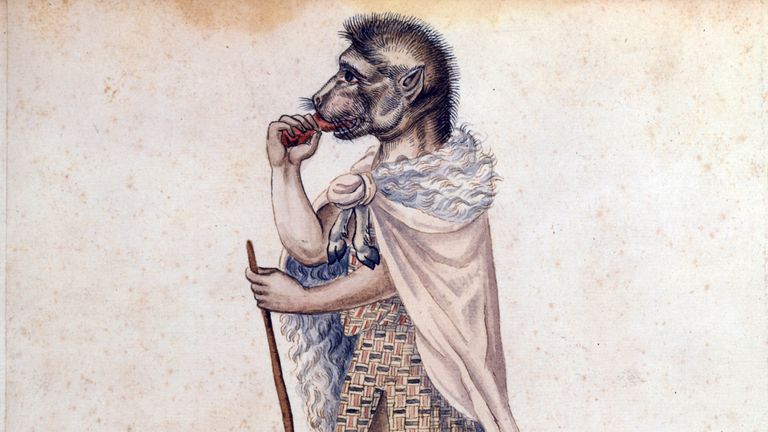
Source: Universal History Archive/Universal Images Group via Getty Images
Marco Polo believed that these monsters were ruthless by nature and were best avoided! So, think twice before you dare to come close to these medieval creatures.
The Strange Tale of the Gelin – Turkey’s Ghostly Brides
Throughout the Middle Ages, the people living in present day Turkey had their own strange creature to contend with – the Gelin. Derived from the Turkish word for ‘bride’, the Gelin were the ghosts of women who had died in tragic circumstances related to marriage or childbirth.
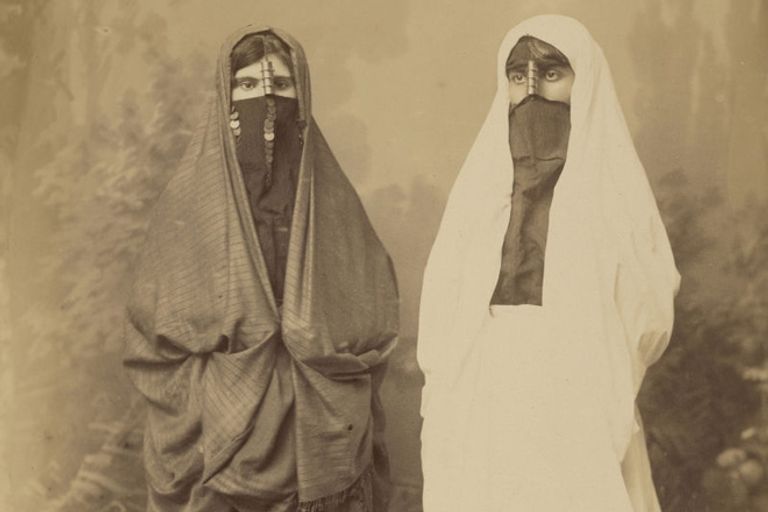
Source: Sepia Times/Contributor
Tales of their haunting were passed down through generations, with their eerie presence a reminder of the dangers women often faced. So next time you hear of a Gelin, remember the tragic stories of these ghostly brides that still linger in Turkey’s history.
Beware the Gelin: Tales of the Terrifying Spirits of the Middle Ages
For centuries, tales of the gelin have haunted the people of the Middle Ages, a testament to the cruel fate they endured. These unfortunate spirits, either murdered by their husbands or who didn’t survive childbirth, were believed to roam the Earth, terrifying those who bore witness to them.

Source: mammuth/Getty Images
Sighting a gelin was believed to be a sign of impending death, instilling fear and dread into the hearts of those in the Middle Ages. What dark secrets lie within the stories of the gelin?
Unveiling the Terrifying Secret of Futakuchi-onna
Do you ever get the feeling that something strange is lurking beneath the surface? The Japanese monster futakuchi-onna is a perfect example of this. On the surface, these creatures look like perfectly normal women.

Source: Takehara Shunsen/Wikimedia Commons
But if you were to look closer and lift the hair from the back of their heads, you’d be shocked to find an unexpected secret. A secret so terrifying that it would leave you feeling totally freaked out. So, dare to uncover the hidden truth of futakuchi-onna?
Unsatiated Appetite: The Tale of the Futakuchi-onna
Legend has it that the futakuchi-onna, a supernatural creature from Japanese folklore, had a second mouth concealed at the back of their head with an unquenchable appetite. This mysterious mouth was said to have locks of hair that would grab food from wherever it could find it, and then stuff it into its hidden mouth.
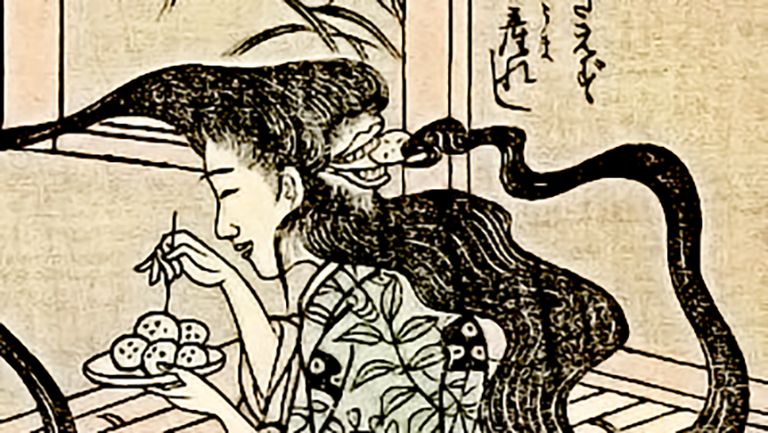
Source: via Wikimedia Commons
It was believed that a futakuchi-onna would appear in a household as punishment for some kind of wrongdoing. Be it fact or fiction, the tale of the Futakuchi-onna has captivated the minds of many.
Fleeing from the Fearful Ifrits
For centuries, Muslim communities have been wary of djinns, a range of different types of ghosts and apparitions. Of these, the most dreaded of all was the ifrit – a powerful, shape-shifting creature often made of fire or smoke, with wings and a penchant for living underground.
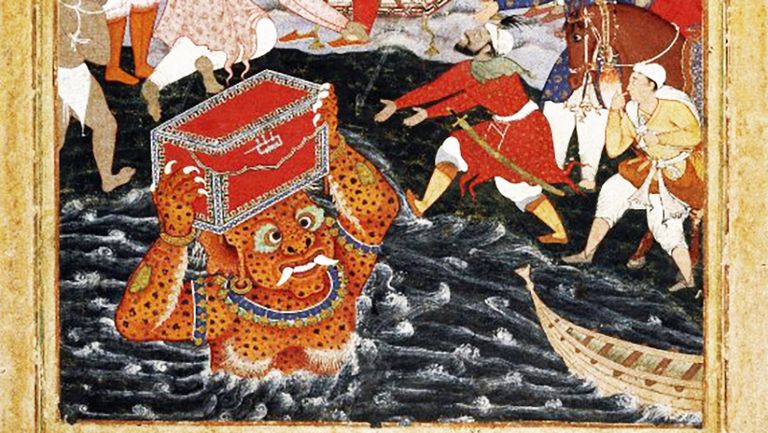
Source: Brooklyn Museum/Wikimedia Commons
People would flee in terror at the mere sight of the ifrit, fearing their great strength and malicious intent. So, the next time you hear a loud thud coming from down below, beware – it could be an unwelcome ifrit lurking in the shadows!
Overcoming Evil Djinns with Magic and Prayers
Are you familiar with djinns? They are powerful beings with the ability to be a force for good, but unfortunately, they are often associated with death and destruction. Trying to defeat them with ordinary weapons is not enough; the only way to overcome them is by using magic or invoking prayers from the Islamic holy book, the Koran.
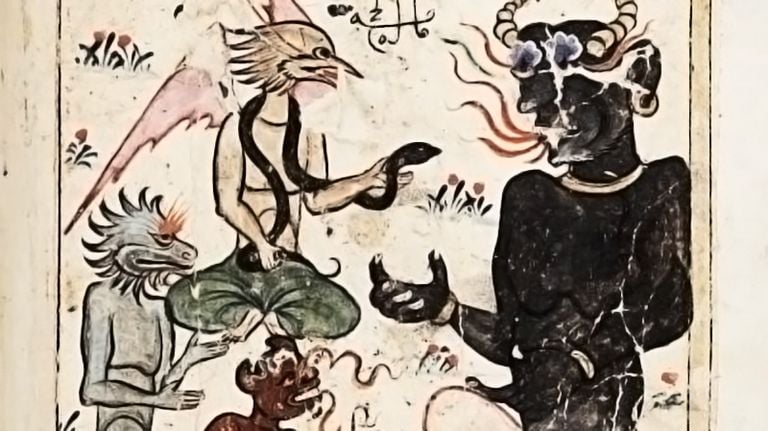
Source: via Wikimedia Commons
Only with these powerful tools at our disposal, can the fight against evil djinns be won regaining our peace and security.
Exploring the Mysterious Finfolk of the Remote Orkney Islands
The Orkney Islands, a remote archipelago located some 20 miles north of the Scottish mainland, have a rich and mysterious history. Having come under the rule of Norway and Denmark before being annexed by Scotland in 1472, these islands have a unique story to tell.
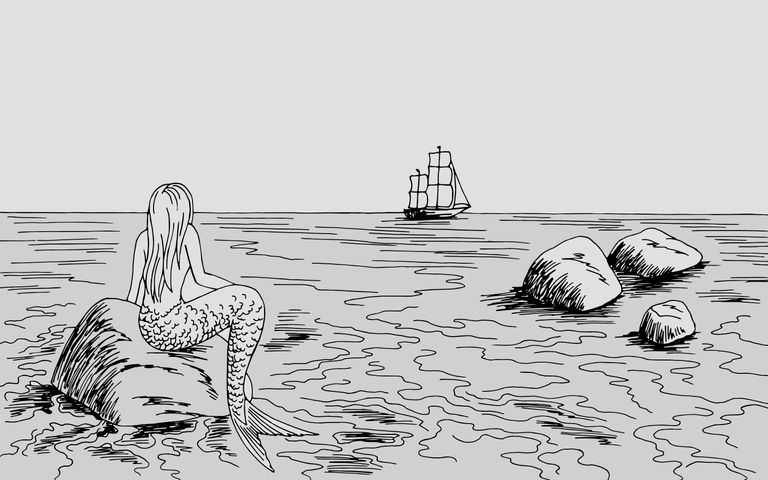
Source: Aluna1/Getty Images
One of the most intriguing aspects of their past is the legend of the Finfolk, a race of shape-shifting monsters, believed to possess supernatural powers. For centuries, these mysterious creatures captivated locals and visitors. Discover the secrets of the Finfolk and explore the mystical Orkney Islands!
The Mythical Finfolk: Captors of the Sea
The Orkney Islands are surrounded by legends of Finfolk – mysterious creatures of the sea that had the power to control the waves. It was said that they could even call upon the waters to do their bidding. Finfolkaheem, their fabled underwater city, was the stuff of legend, but they could also survive above the waves.

Source: Lena_graphics/Getty Images
But the Finfolk were feared for another reason; it was said they would capture and imprison islanders, keeping them as their prisoners for life. Whether these stories are true or not, it’s certain that the Finfolk remain a powerful and mysterious part of Orkney’s folklore.
The Manananggal - A Monstrous Predator
Behold the Manananggal – an abomination of nature that strikes fear into the hearts of many. Deriving its name from the Tagalog language of the Philippines, the word ‘tanggal’ means ‘to split’, and that’s exactly what these monsters could do. Manananggals were predators and their prey was none other than humans.
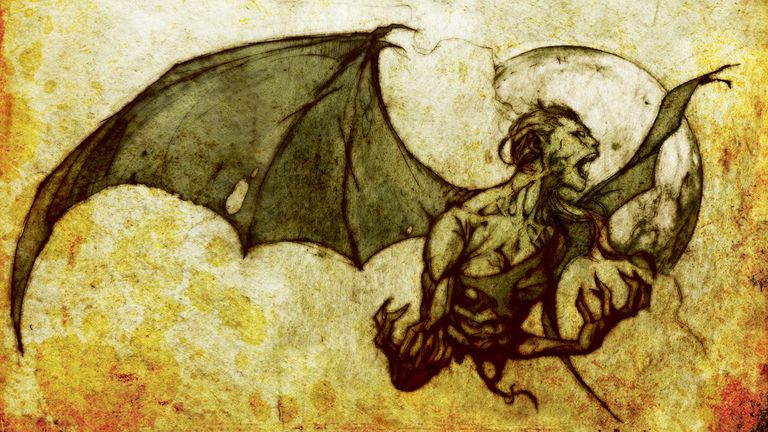
Source: Gian Bernal/Wikimedia Commons
But the most spine-chilling part of their hunting technique was their ability to separate their upper body from their lower half, leaving the torso and wings to fly off in the night sky in search of their victims.
Beware the Manananggals: A Terrifying Tale from the Philippines
Thus traveling through the Philippines in the Middle Ages was a daunting prospect for many, as the region was home to this particularly disturbing creature. These monsters could sprout wings, split in two, and fly through the night sky in search of human prey.

Source: Scary Side of Earth/Flickr Commons
Once they found a victim, they would then use their elongated tongues to suck the blood from their unfortunate target. The thought of such a creature flying around in the dark was enough to keep any traveler on their toes.
Unraveling the Mystery of the Basilisk
Experience the thrill of uncovering the strange life cycle of the basilisk! Long before medieval folk were tormented by it, the basilisk had been described by Pliny the Elder in 79 A.D. Found in Europe and North Africa, the strange creature has a rather peculiar lifecycle.
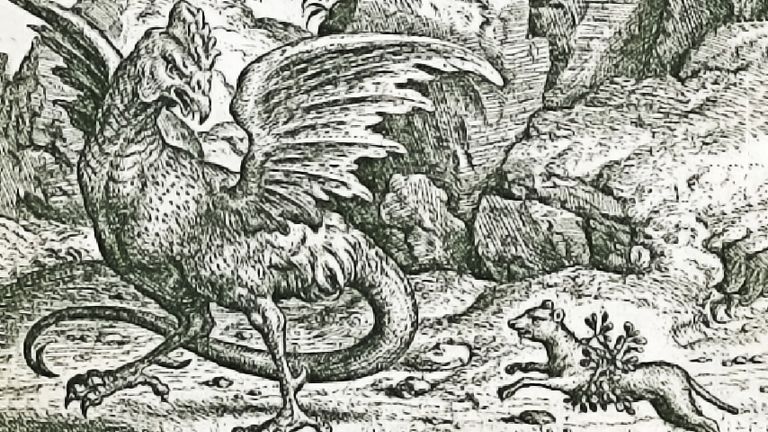
Source: Marcus Gheeraerts the Elder/Wikimedia Commons
It started out as an egg, laid by a rooster, and tended by a toad, from which a snake hatched. Step into the unknown and explore this mythological creature’s extraordinary origin!
The Fearsome Basilisk - The Snake-Rooster Hybrid That Could Kill With Its Glance
The basilisk was a mysterious and feared creature, originating from myths and legends. According to Pliny, the basilisk didn’t move like any other snake – it had its body upright, unlike its slithering counterparts. As the centuries passed, the basilisk became even more feared and its legend evolved – it was now a hybrid of a snake and a rooster.
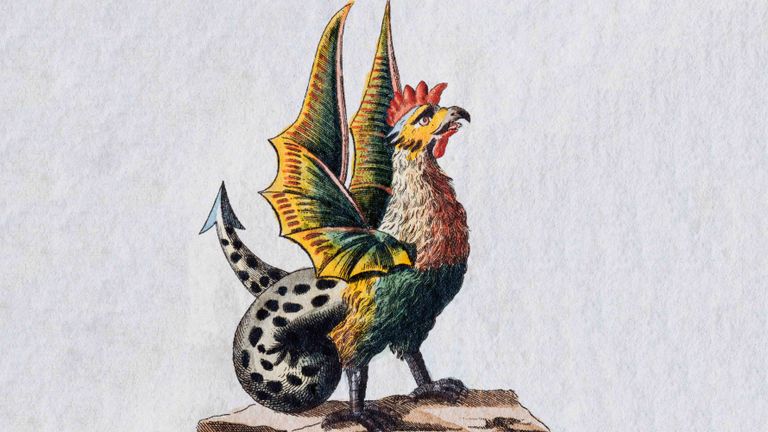
Source: Olaf Kruger/Getty Images
This lethal creature could obliterate a landscape with its breath and kill a human with a death-stare. Truly, it is one of the most fearsome creatures in history.
Cursed to Roam the Earth - The Unfortunate Fate of the Pretas
The belief in reincarnation – the idea that after death we return to inhabit another body – has long been a part of various Asian traditions. But those who had acted in evil ways during their human existence, could be condemned to a horrible fate.
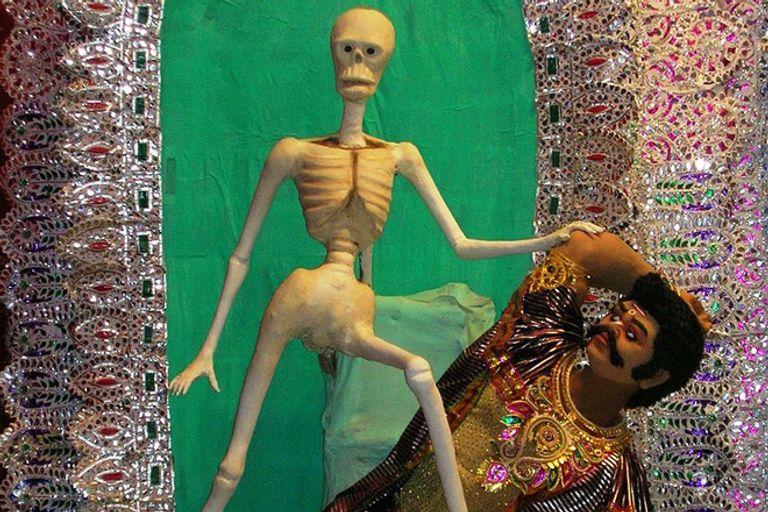
Source: Jonoikobangali/Wikimedia Commons
They would be reborn as pretas, cursed to roam the earth in a state of unbearable suffering. Described as having insatiable hunger, they can never find satisfaction and are doomed to suffer this forever. Truly a most wretched state to be in.
Caught in an Eternal Cycle of Thirst and Hunger: The Plight of the Preta
Nobody likes to feel hungry or thirsty, but for the preta, this sensation was an inescapable part of life. These spirits were cursed to wander the earth and no matter how much they ate or drank, their hunger and thirst could never be sated.
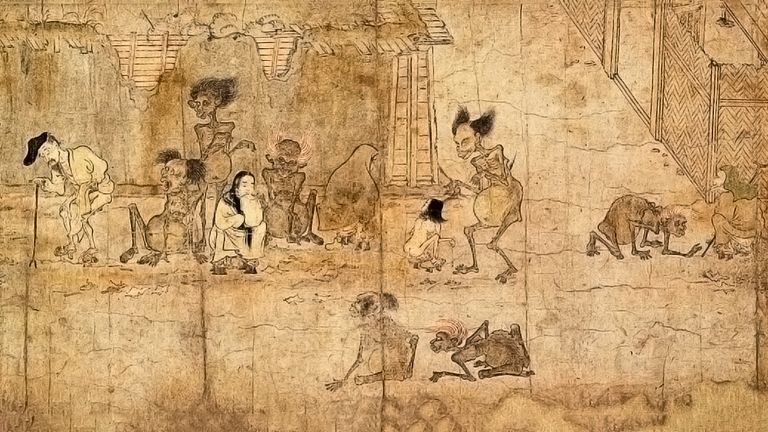
Source: Kyoto National Museum/Wikimedia Commons
In their desperation, pretas were forced to consume all manner of disgusting substances, including rotting flesh and even human feces. It’s a truly heartbreaking tale of an eternity spent in a cycle of unending hunger and thirst.
